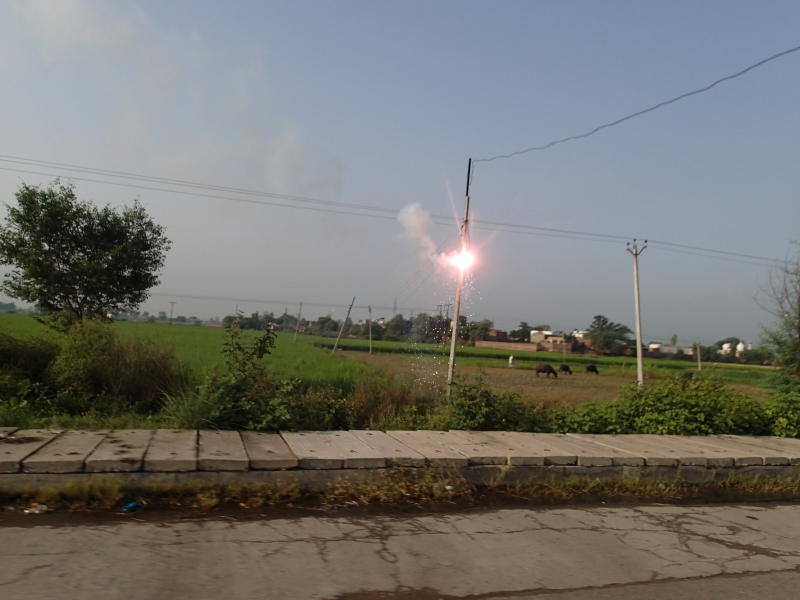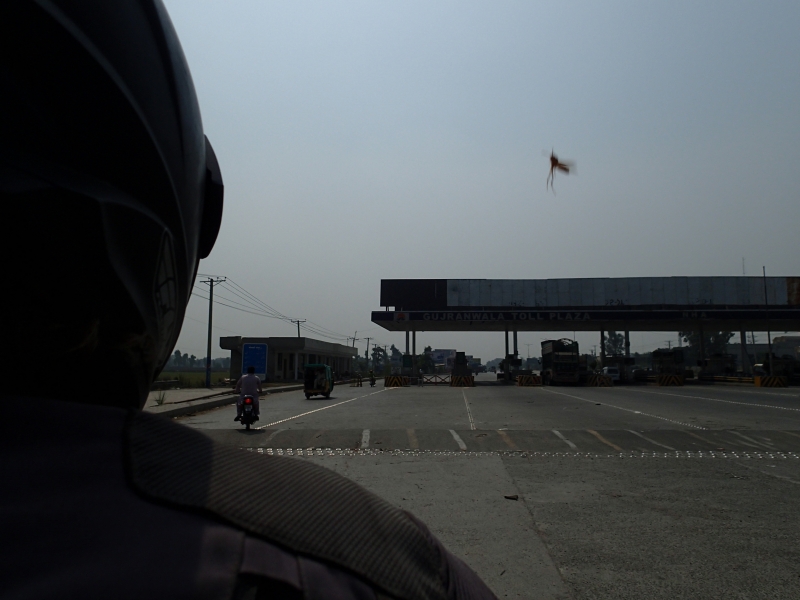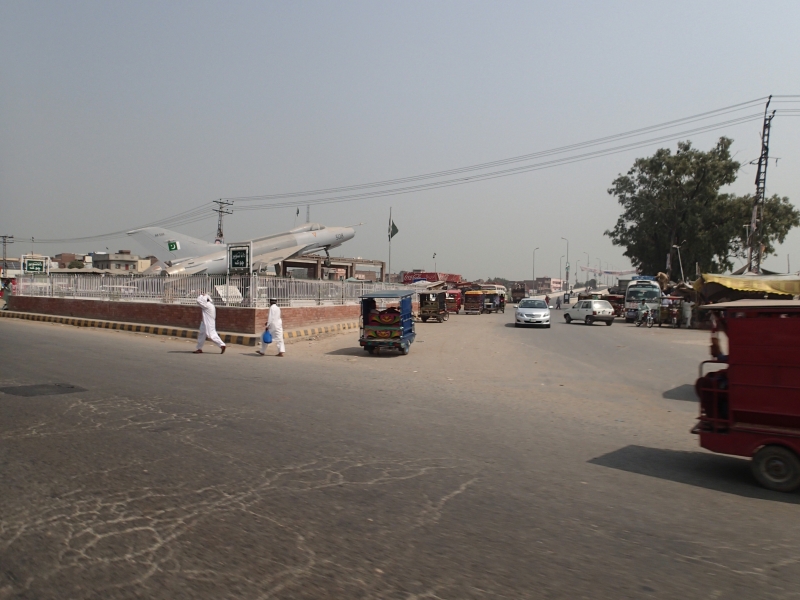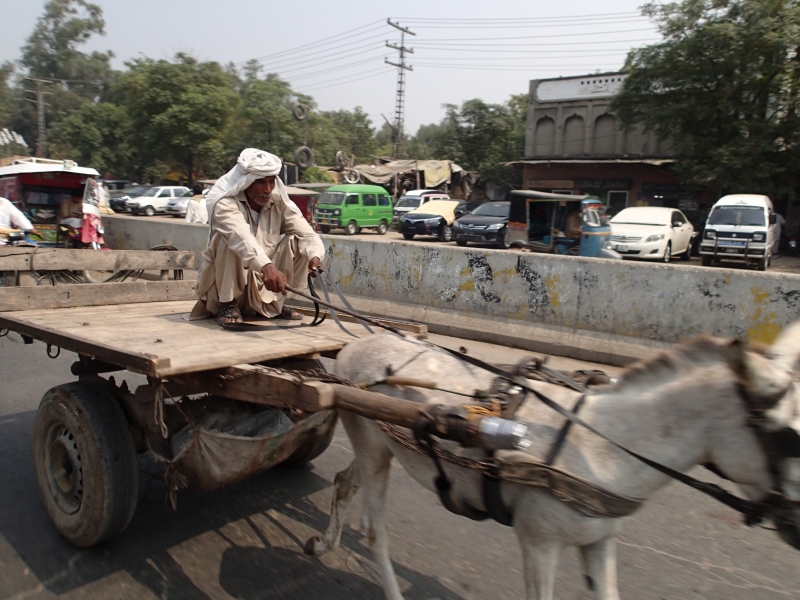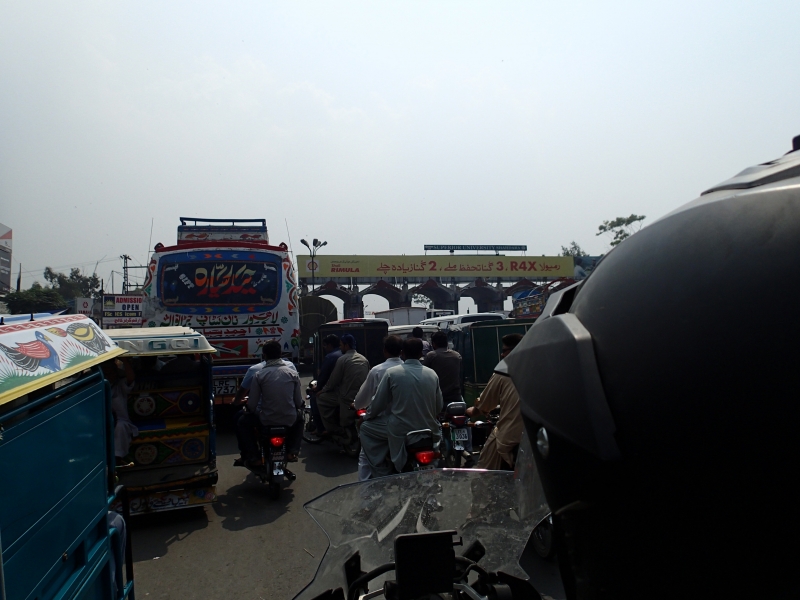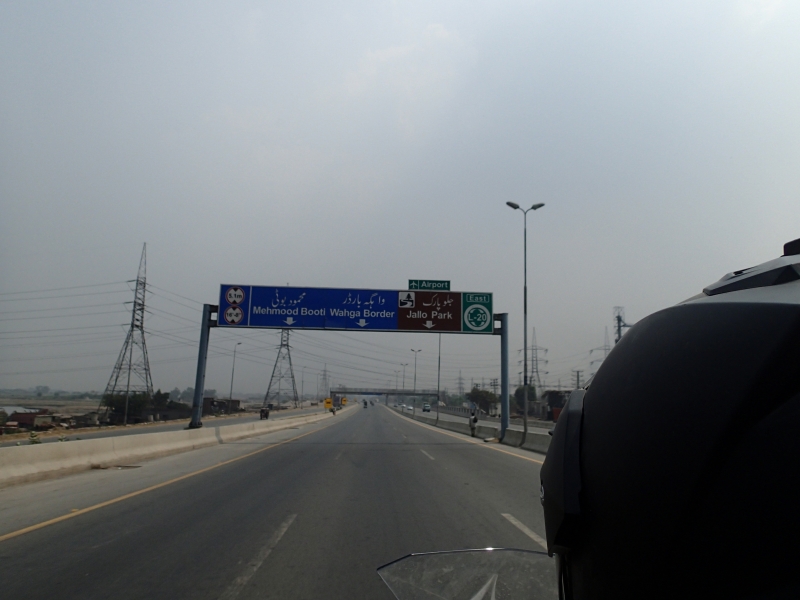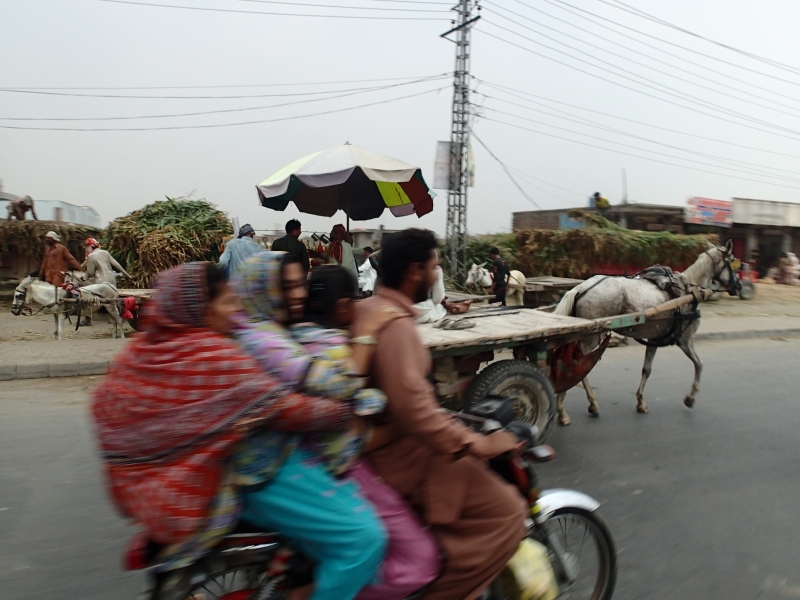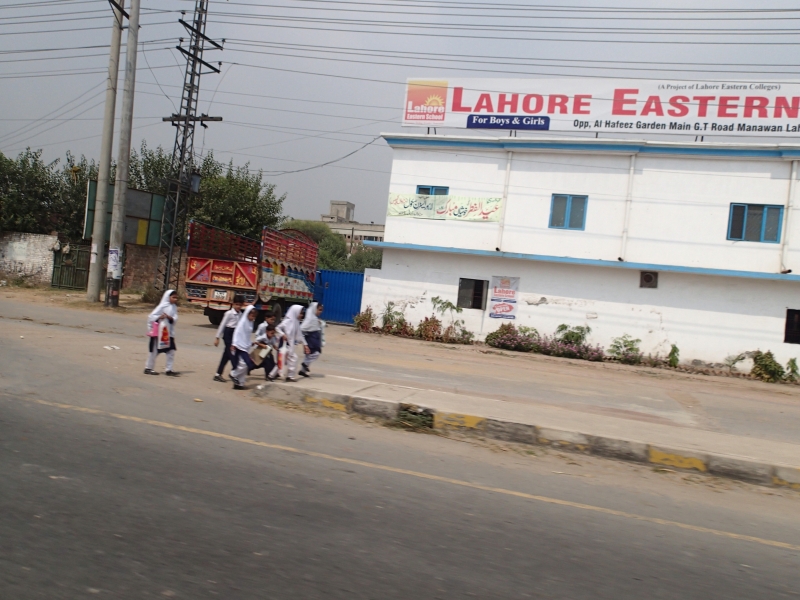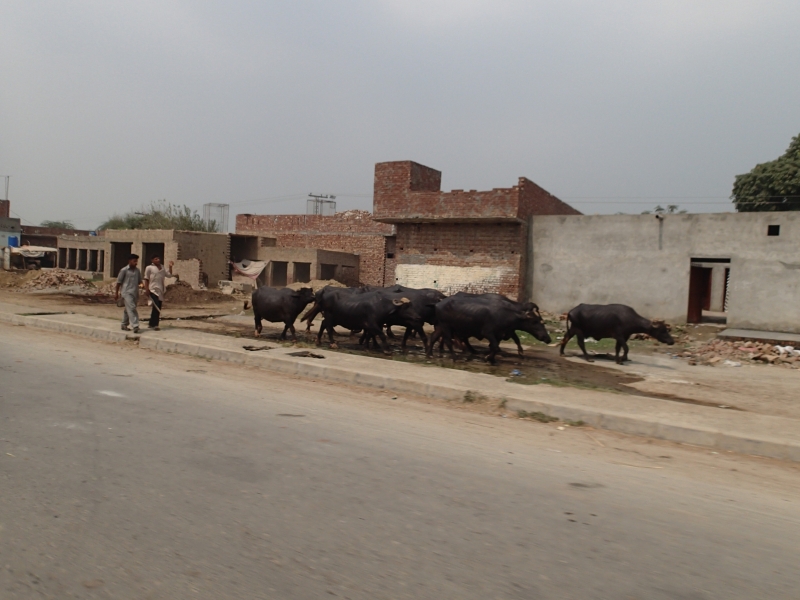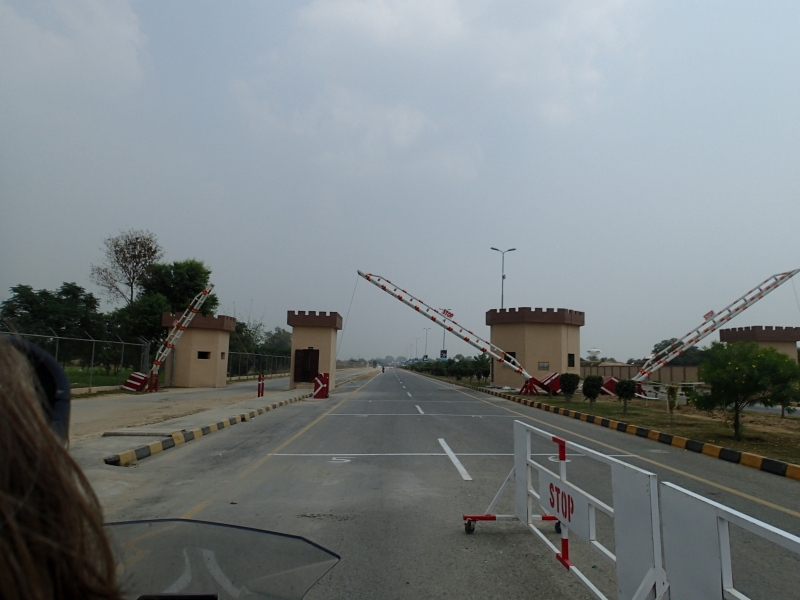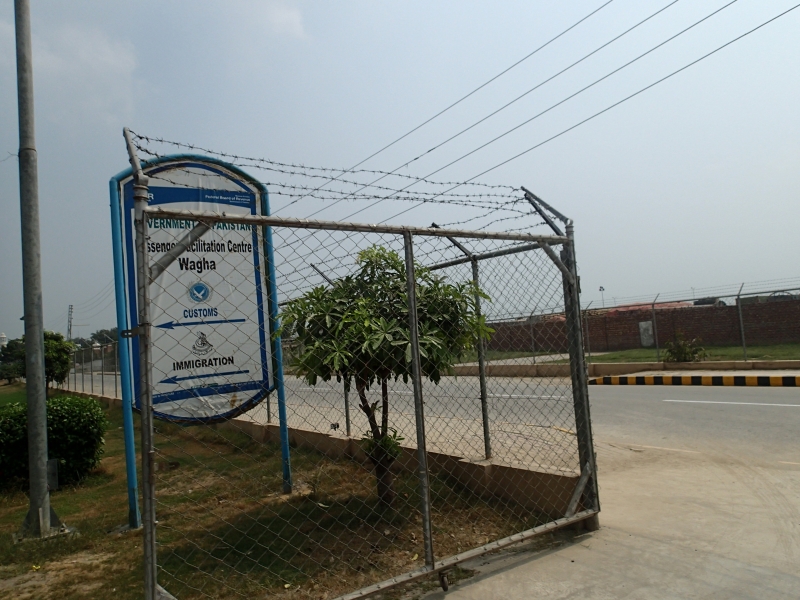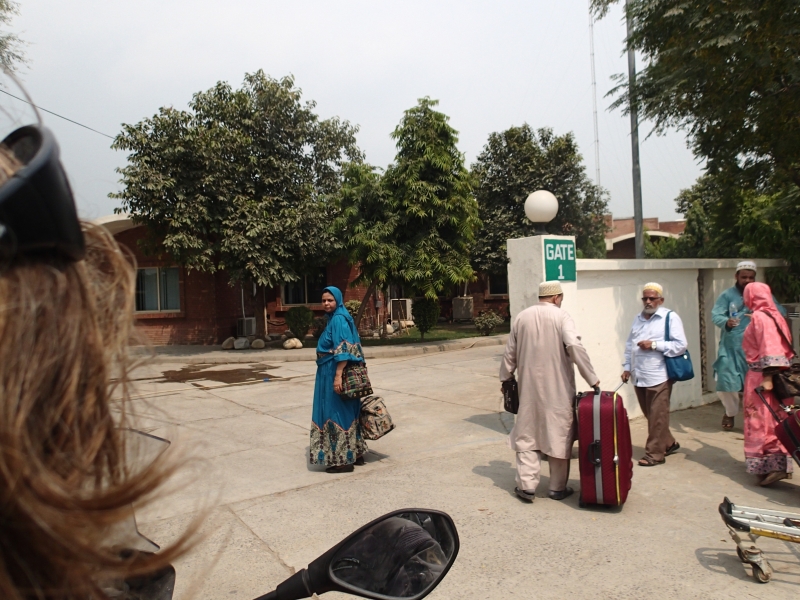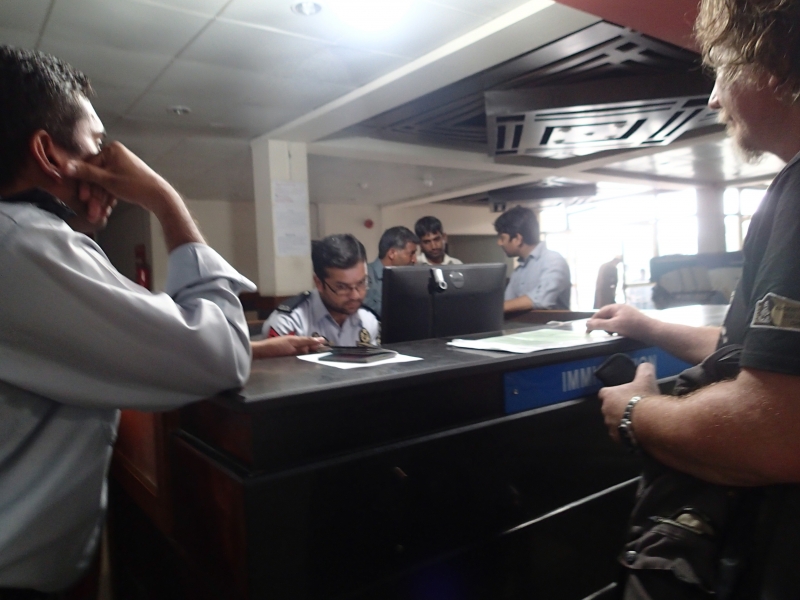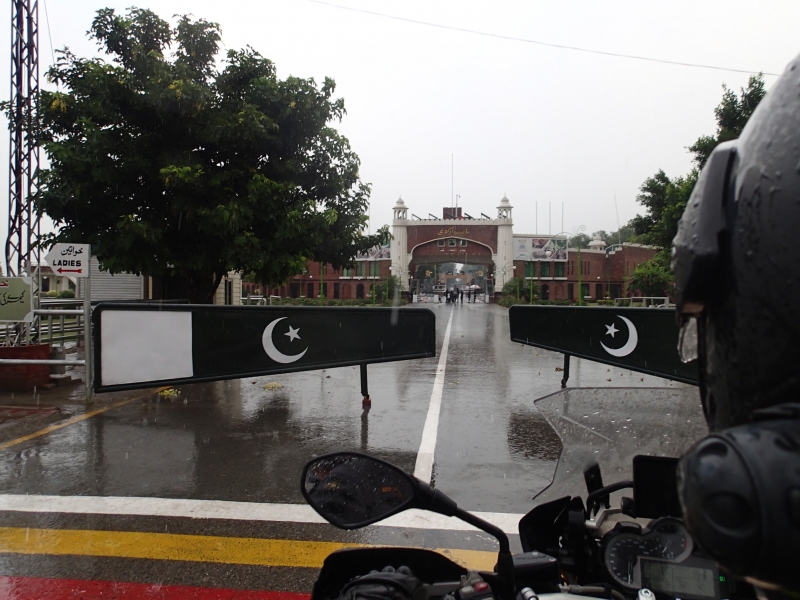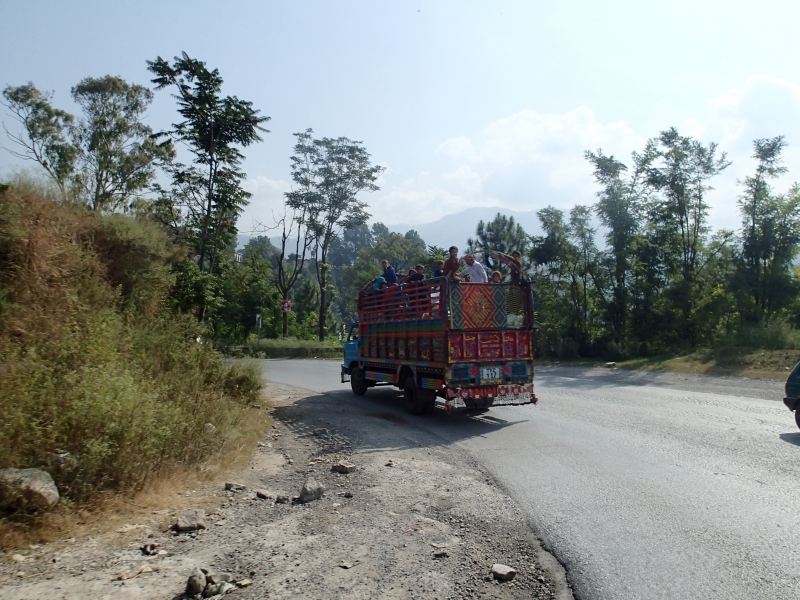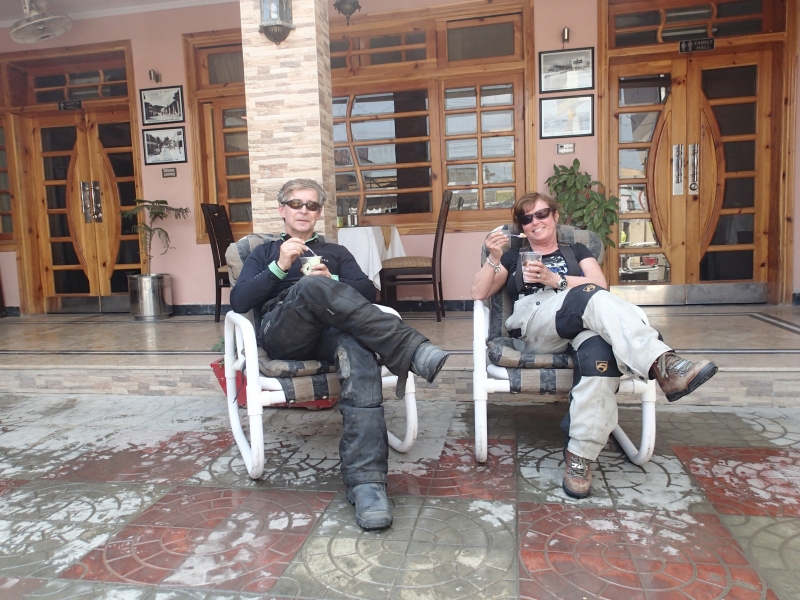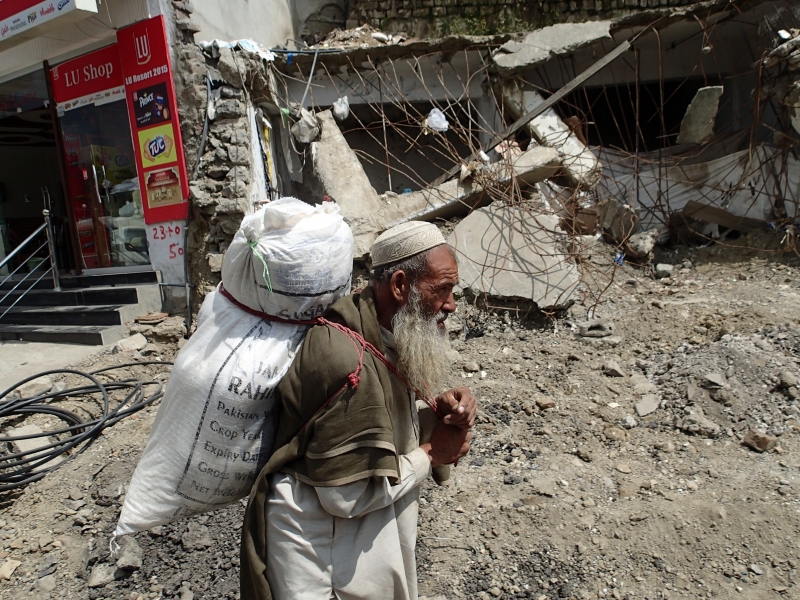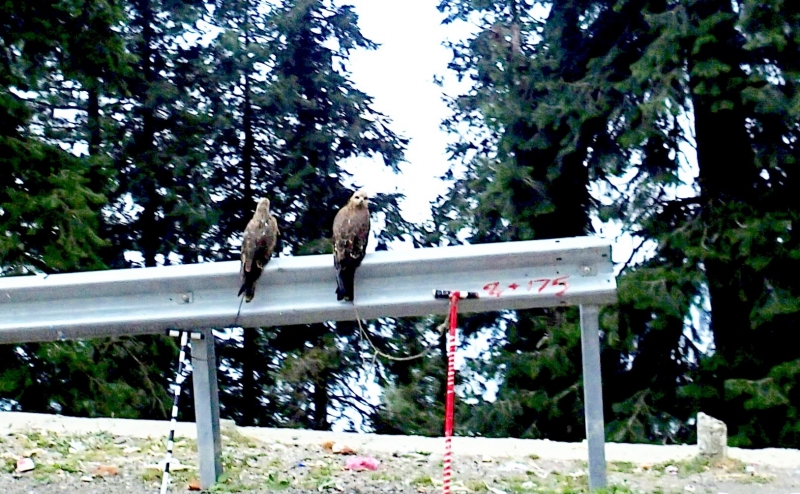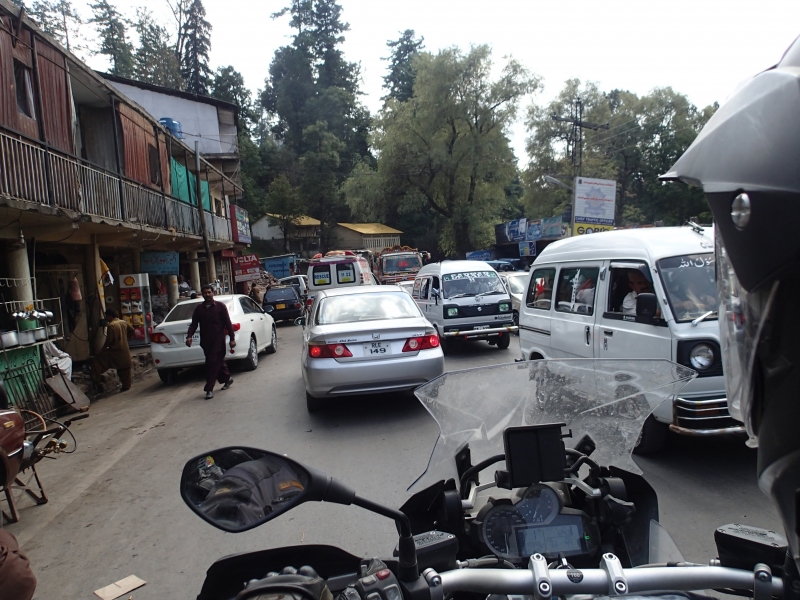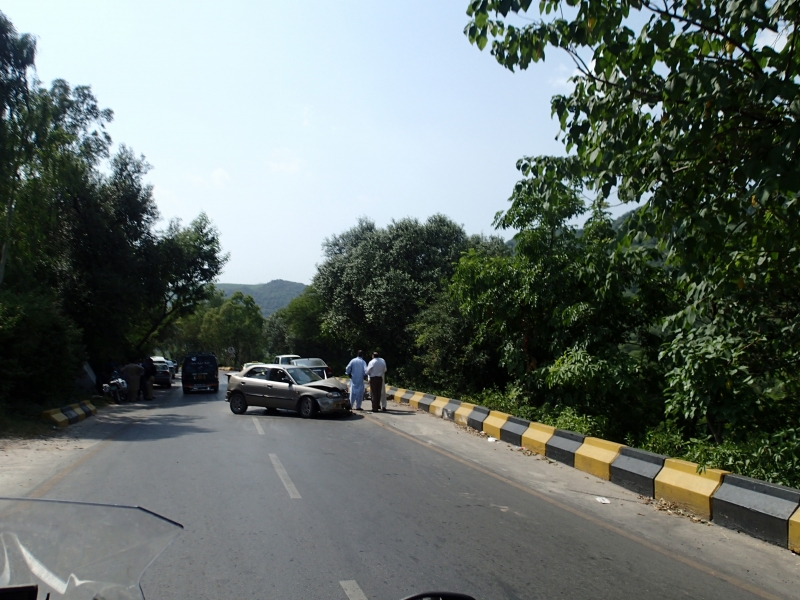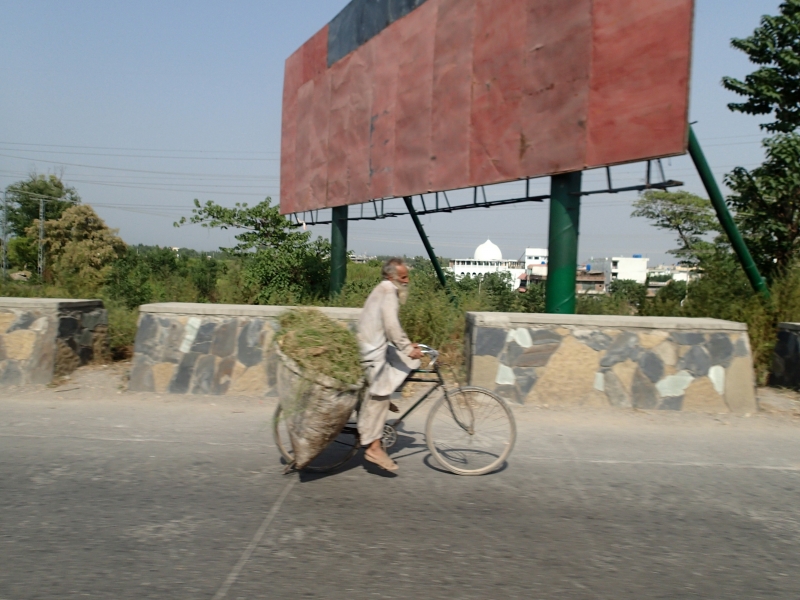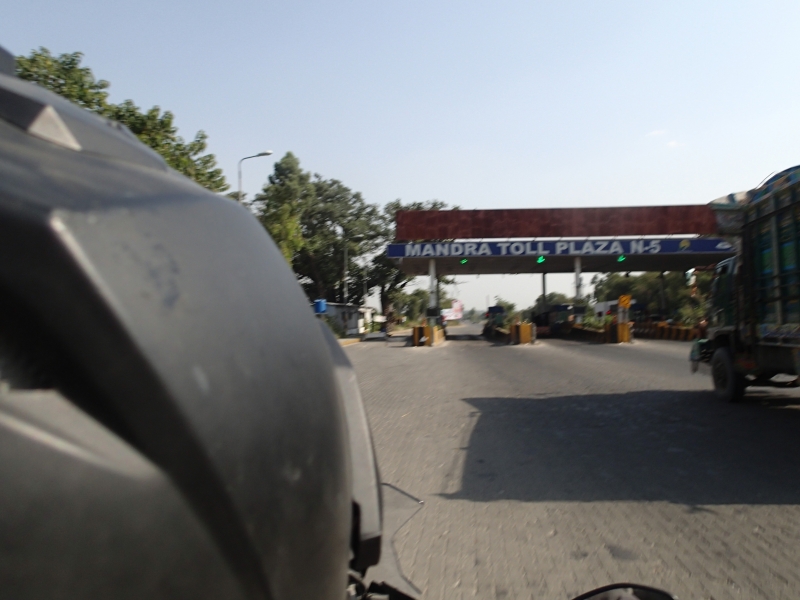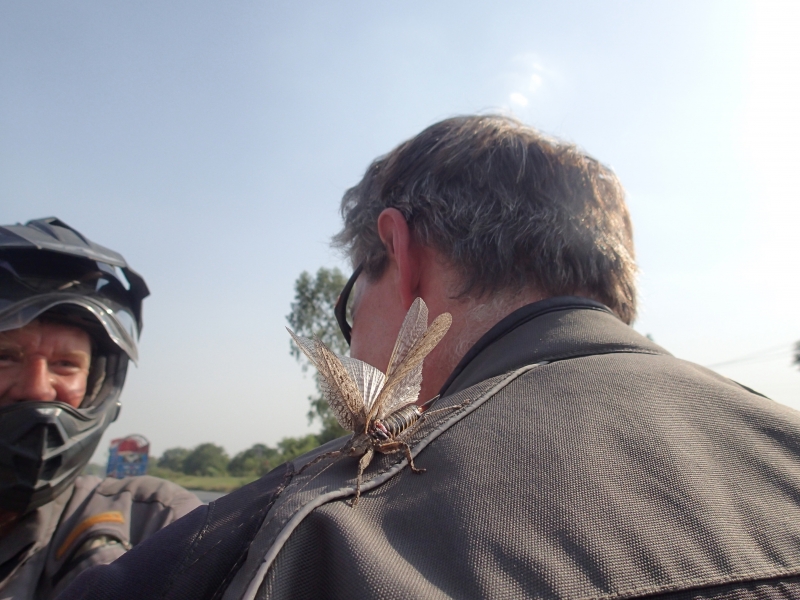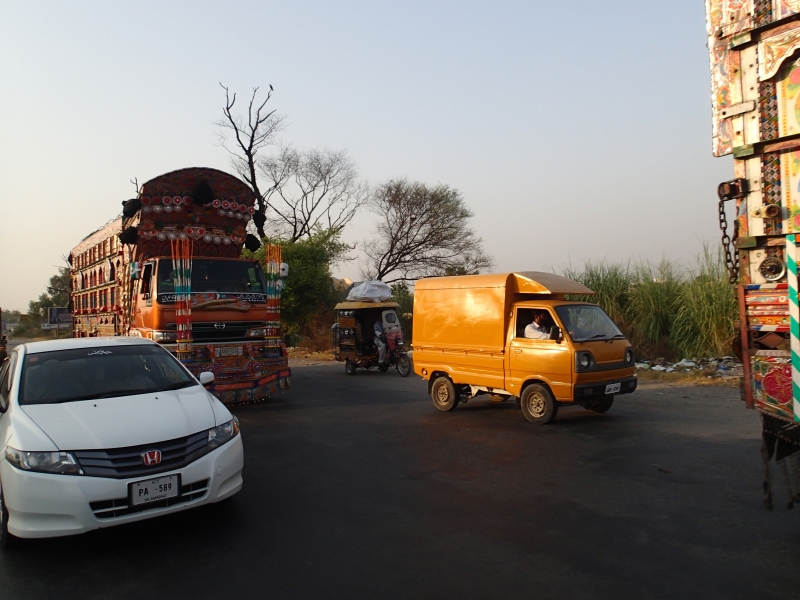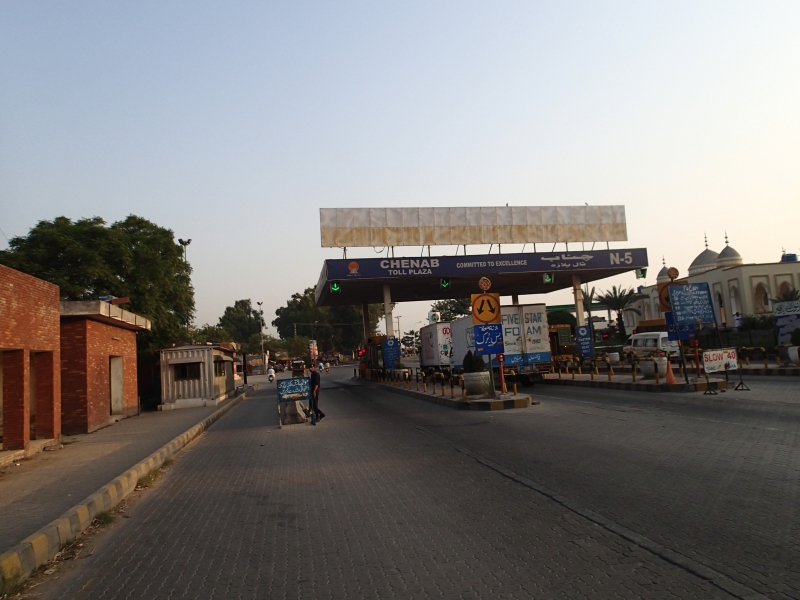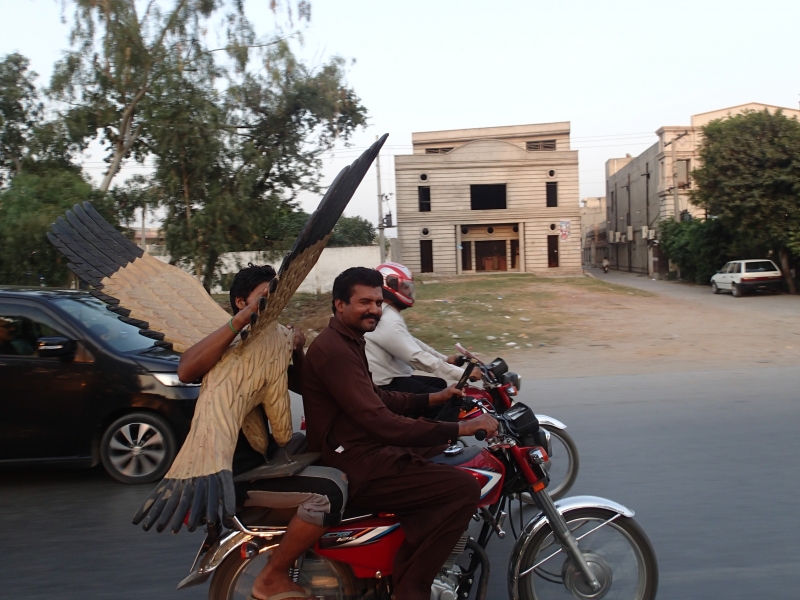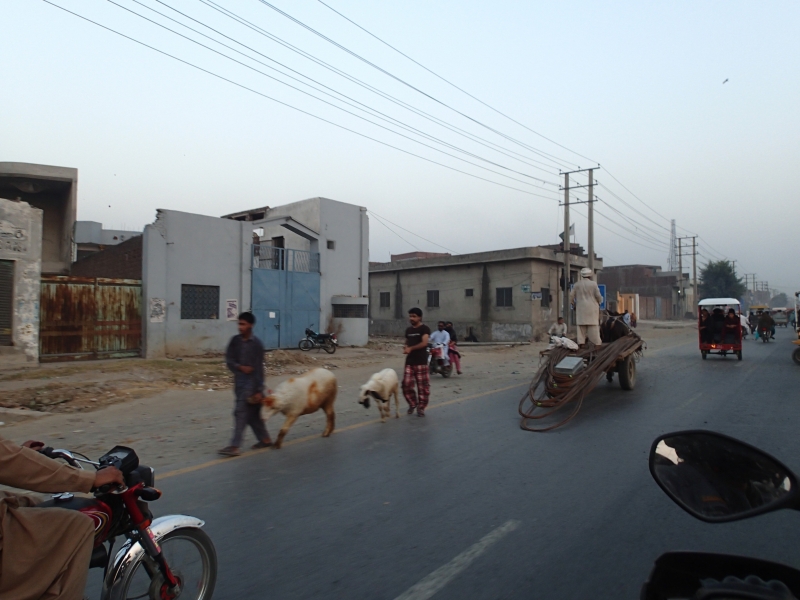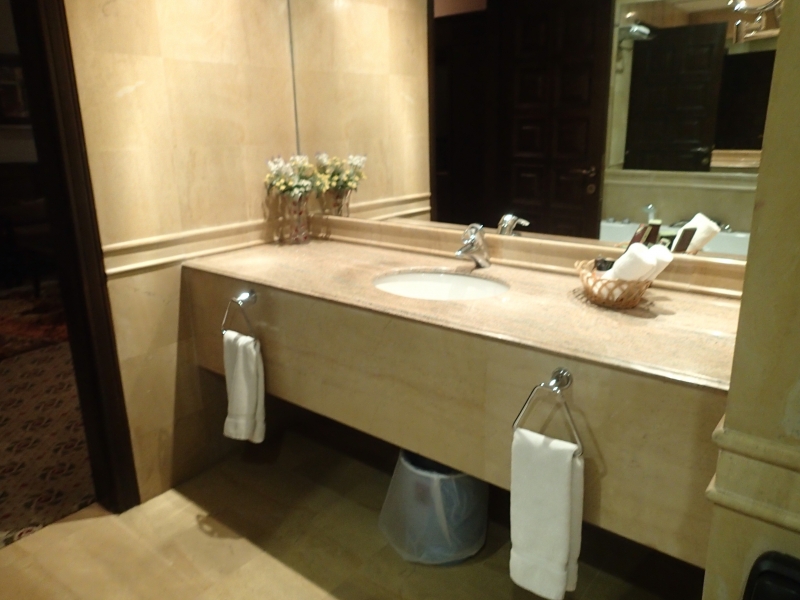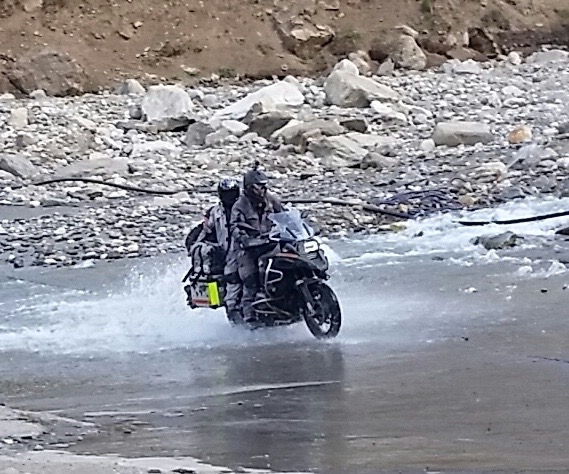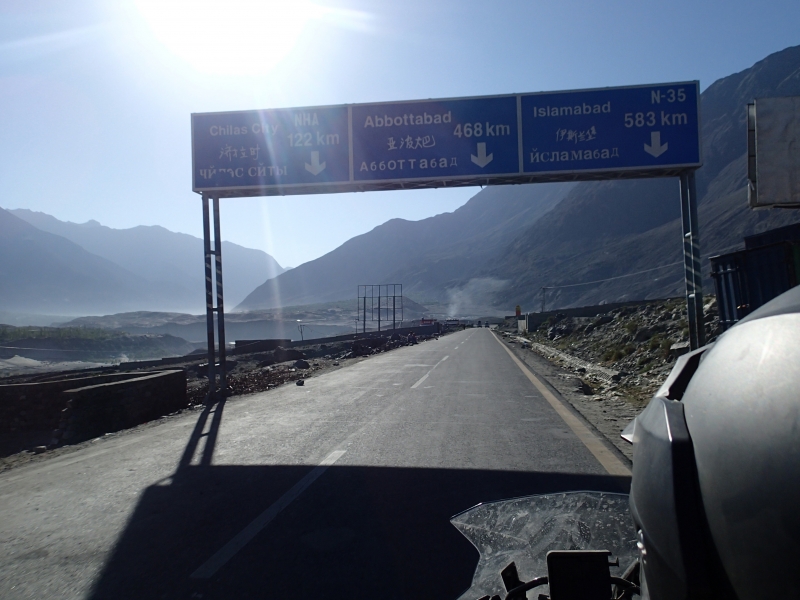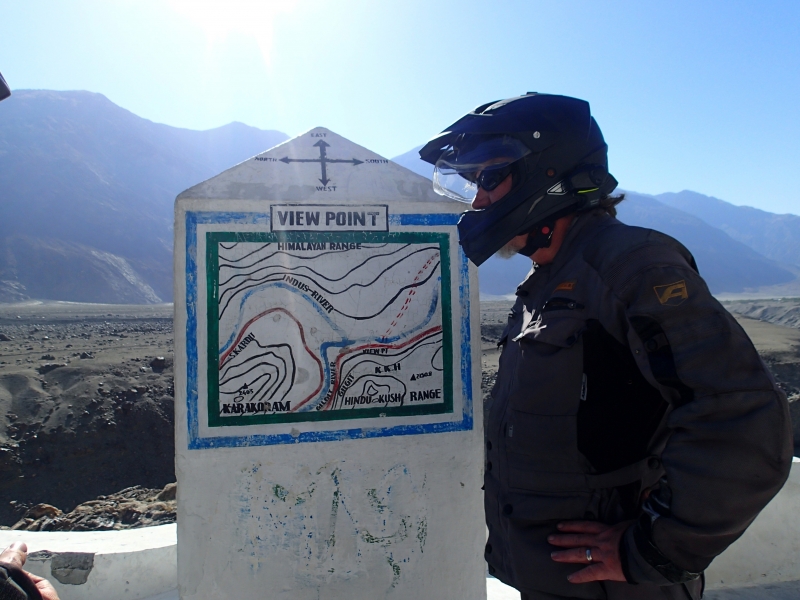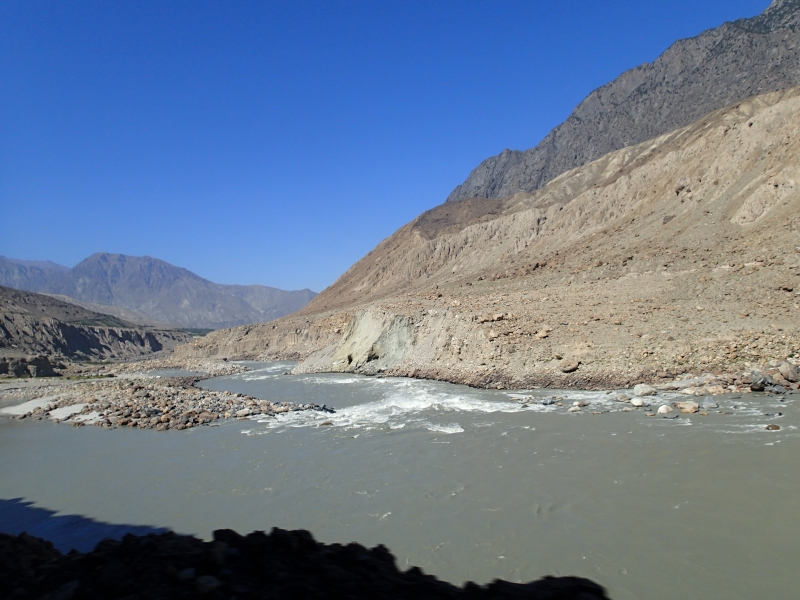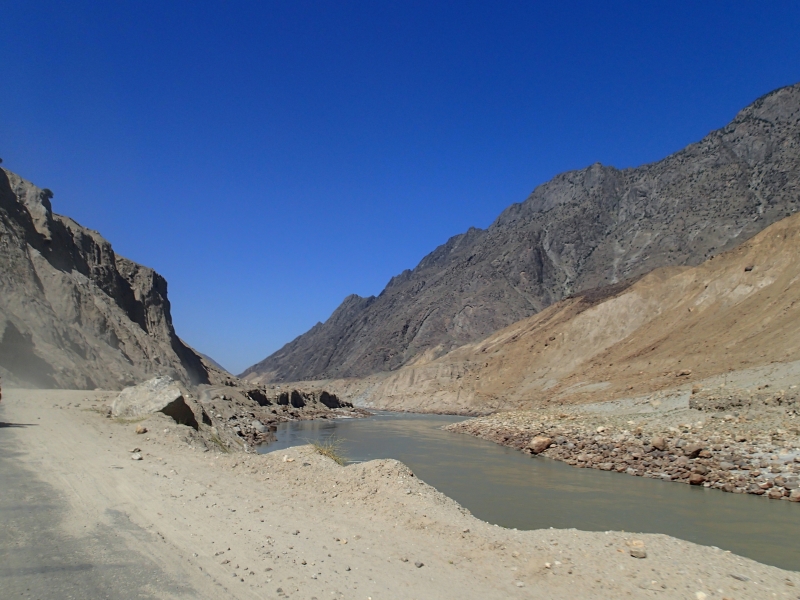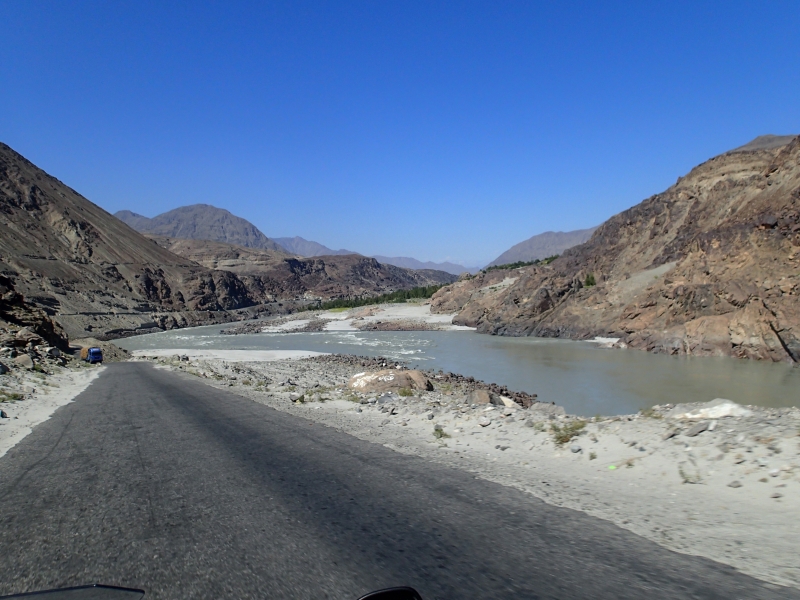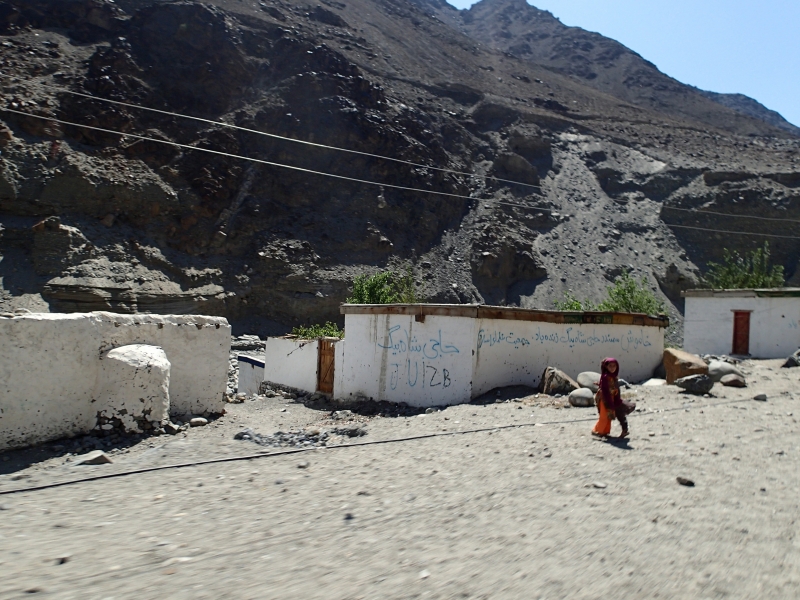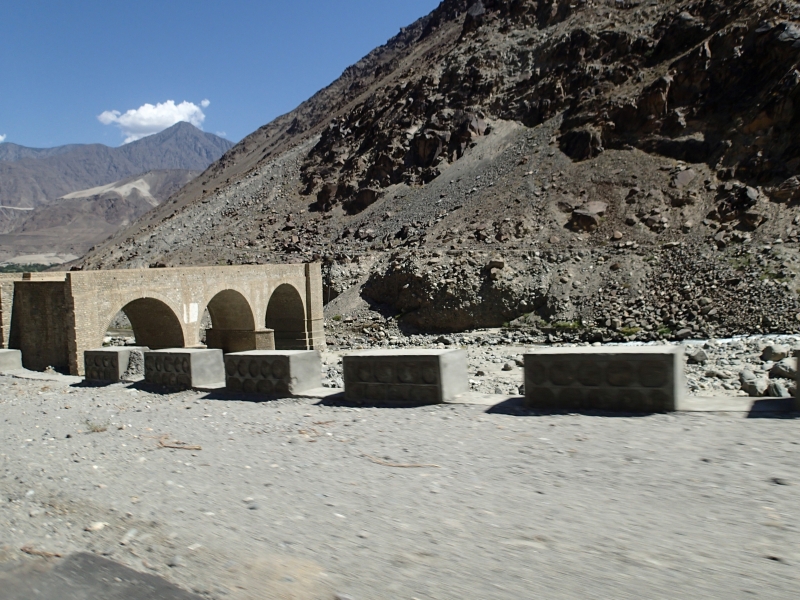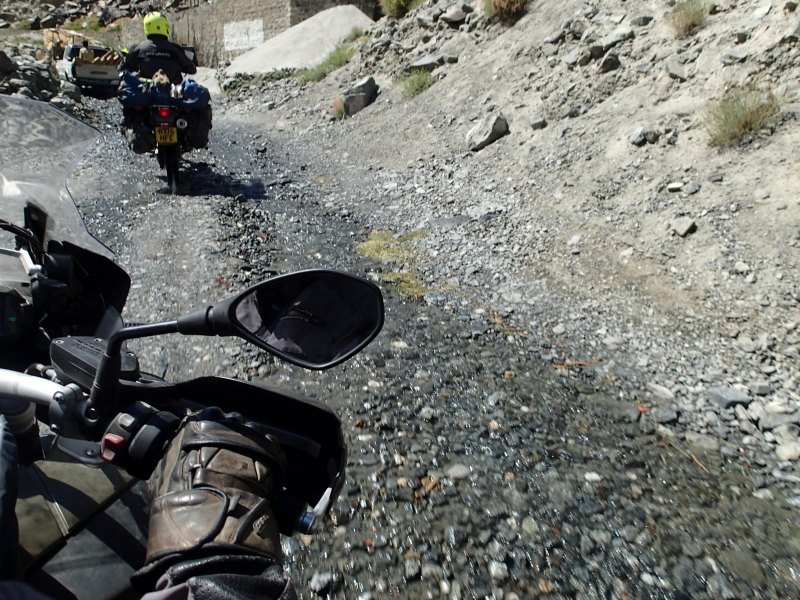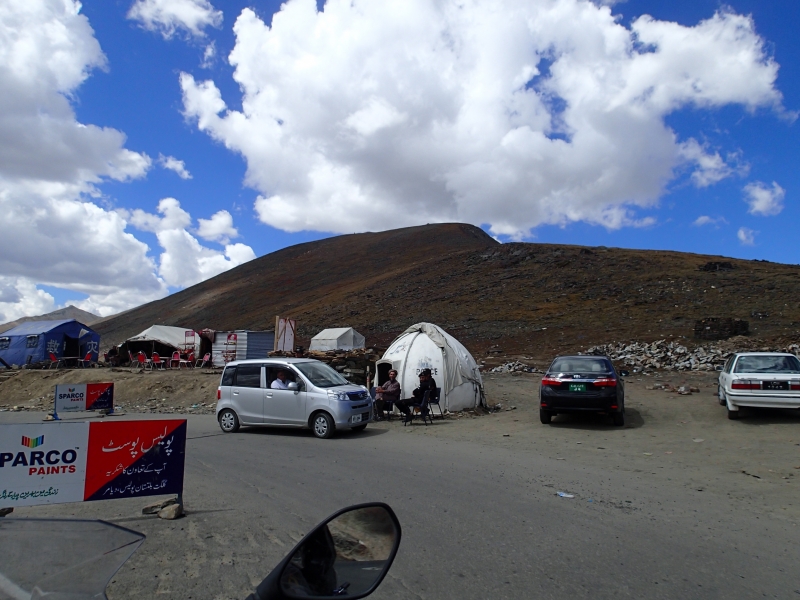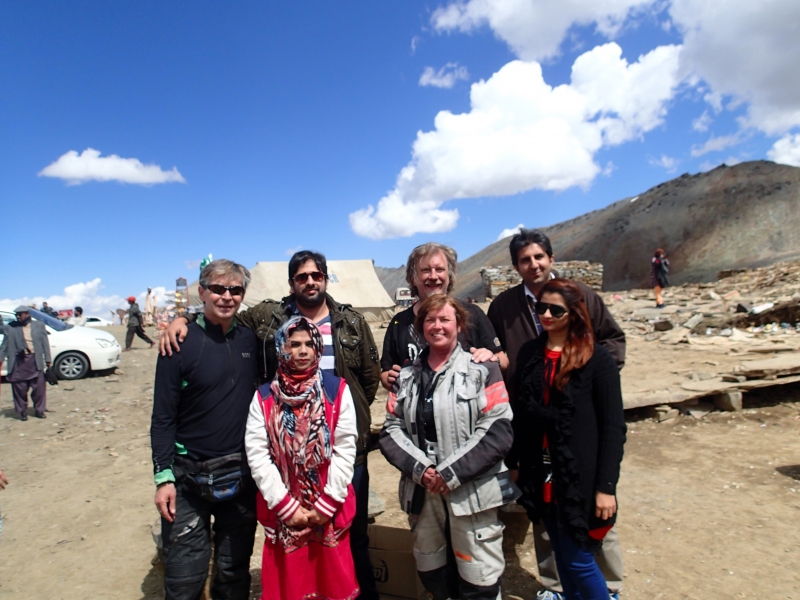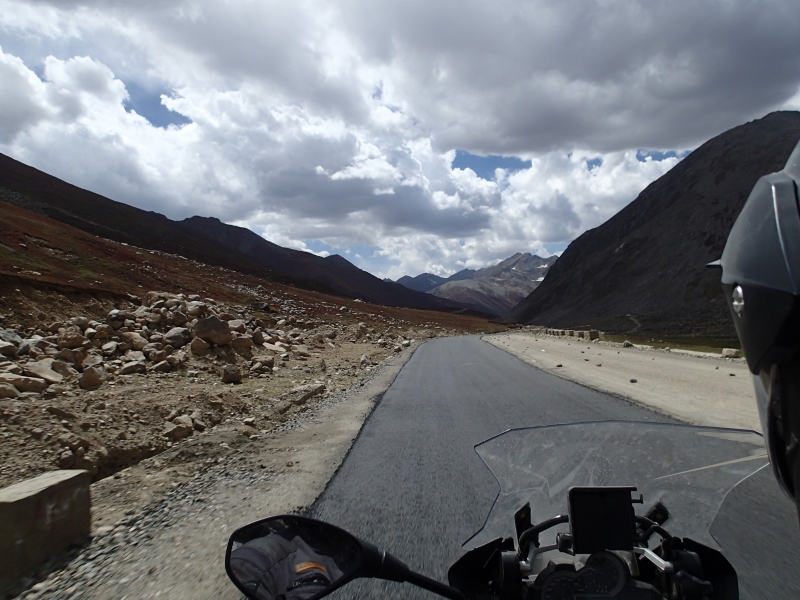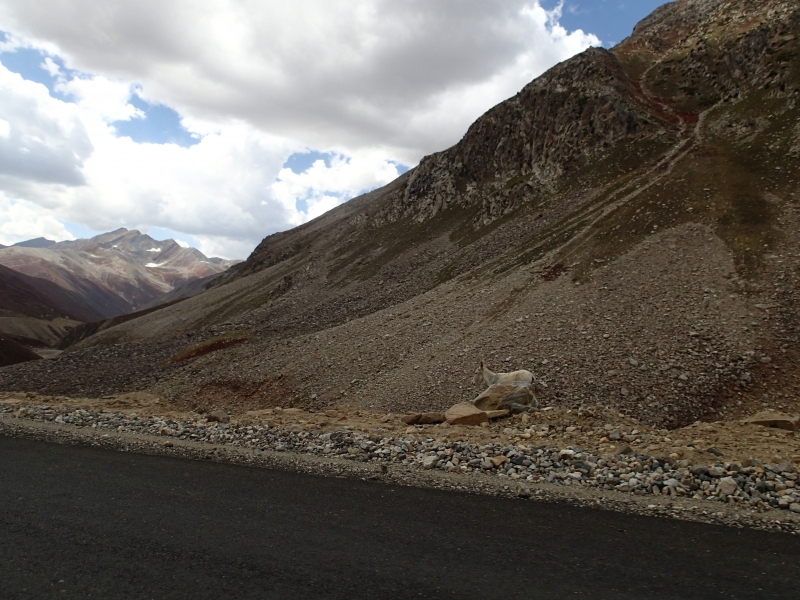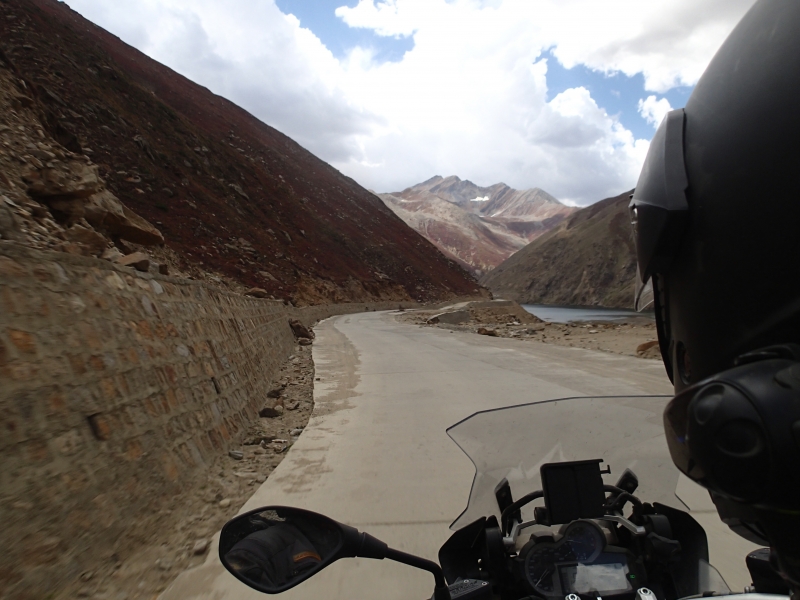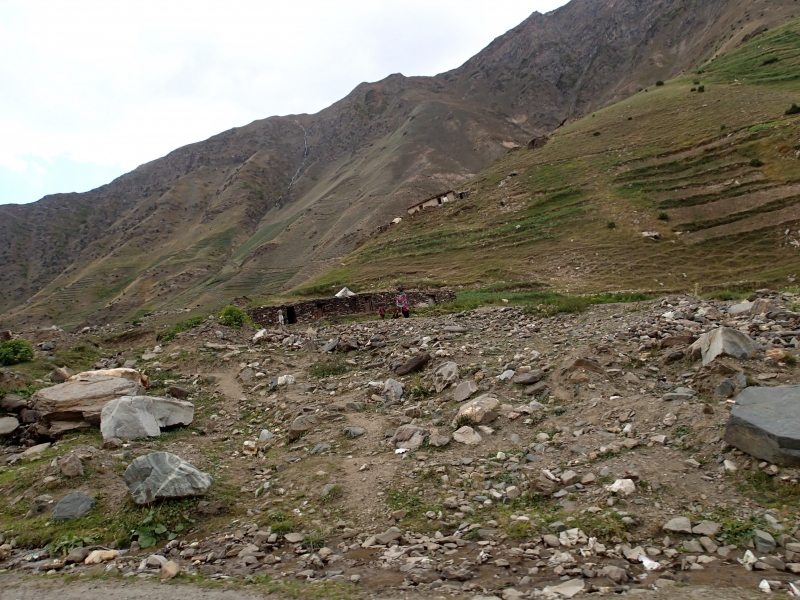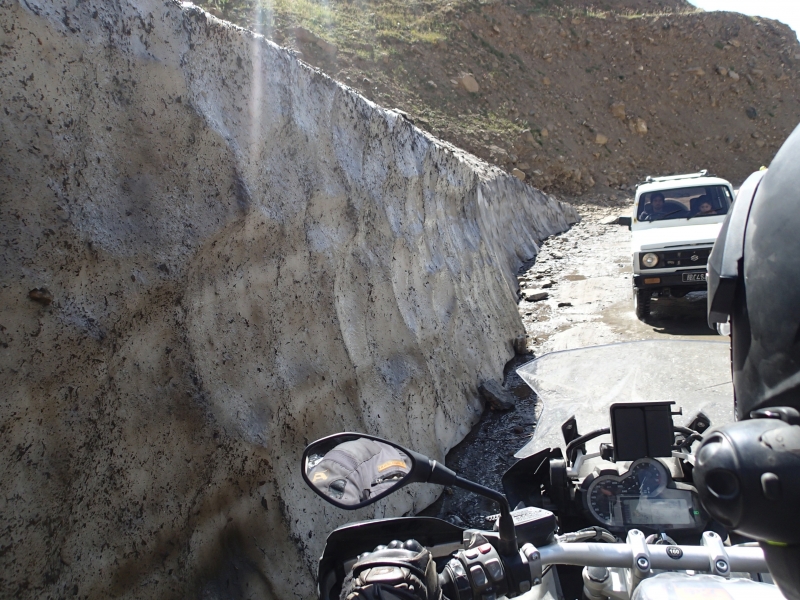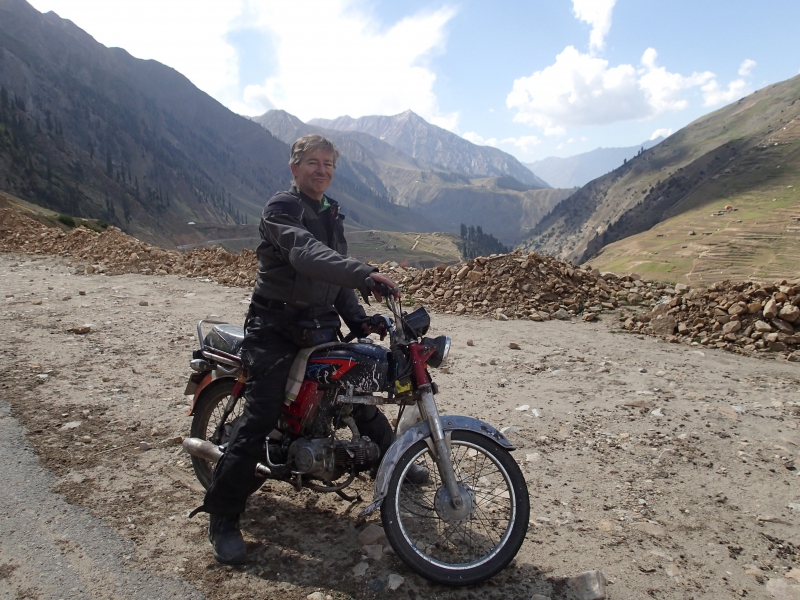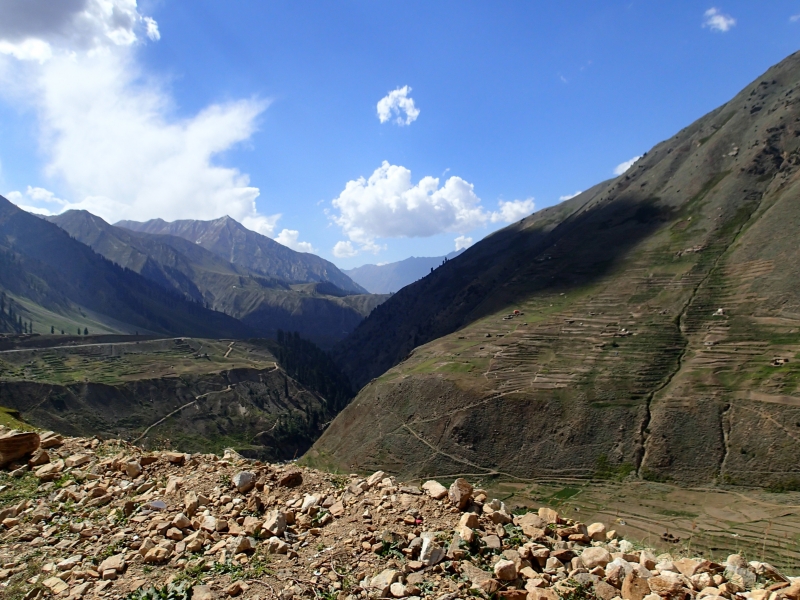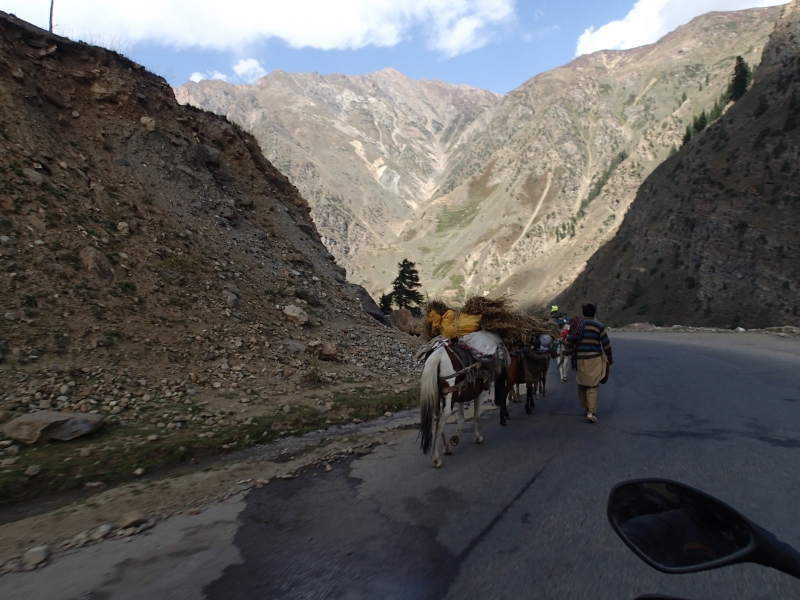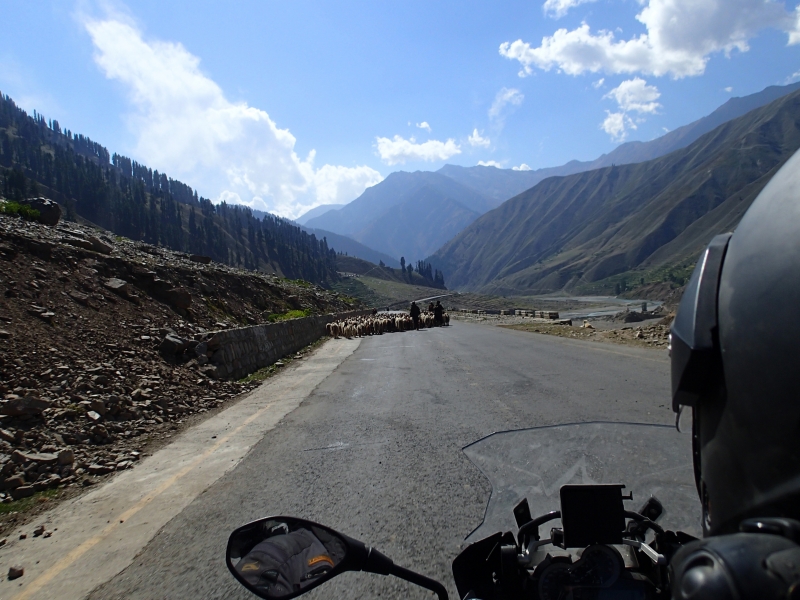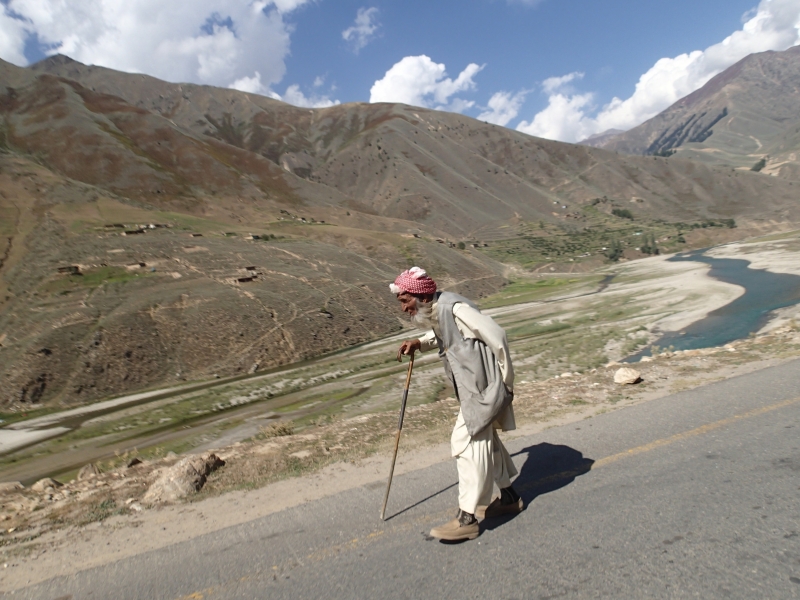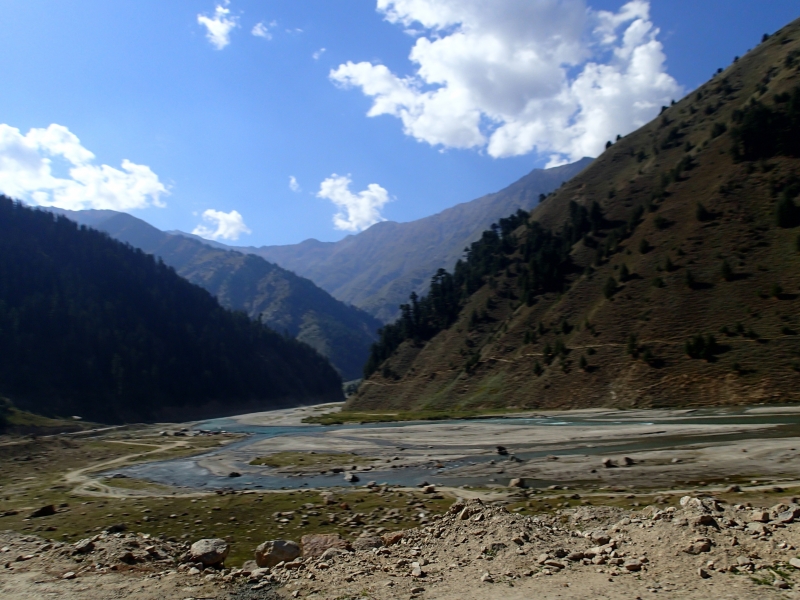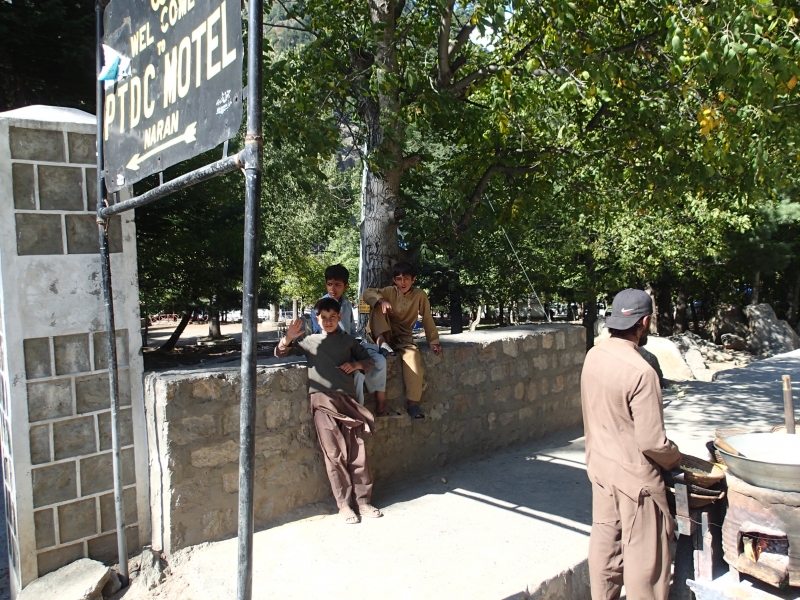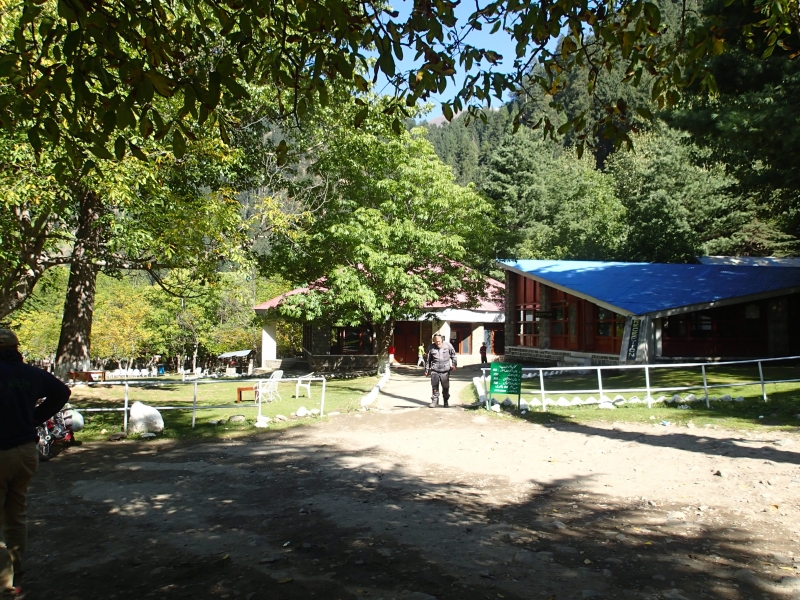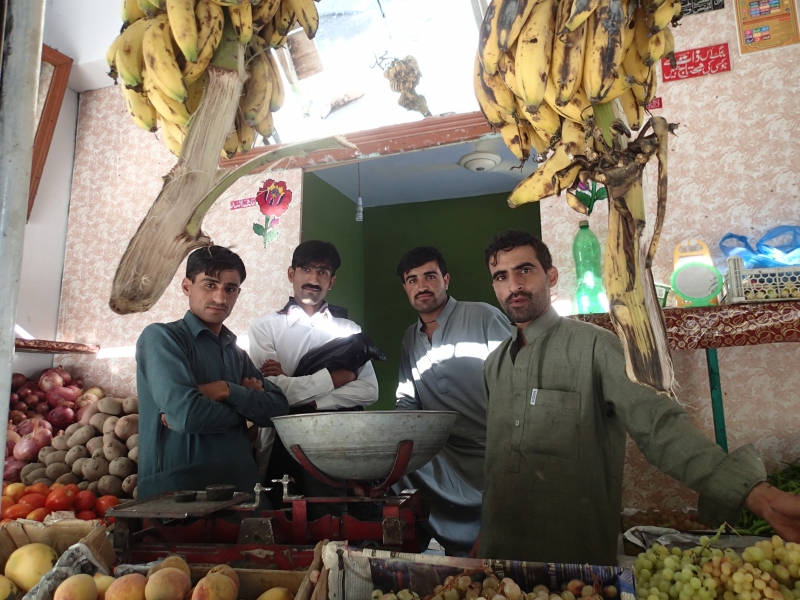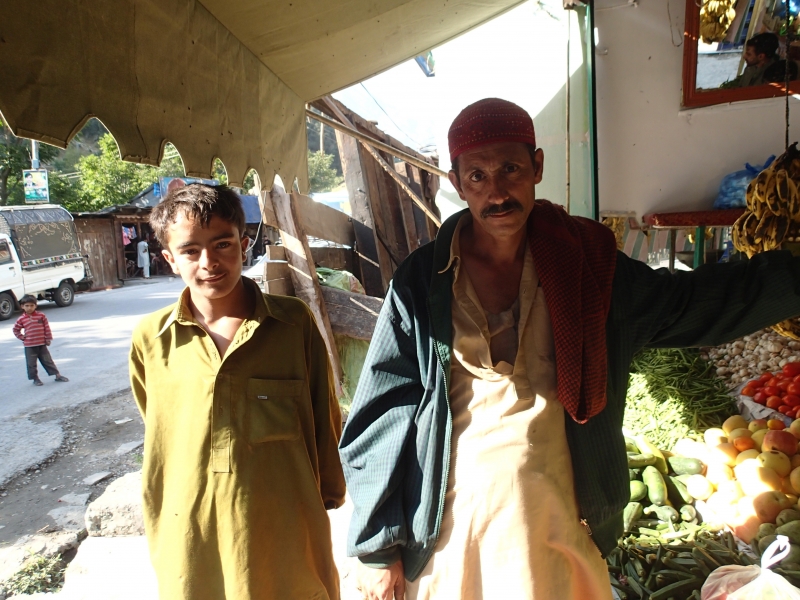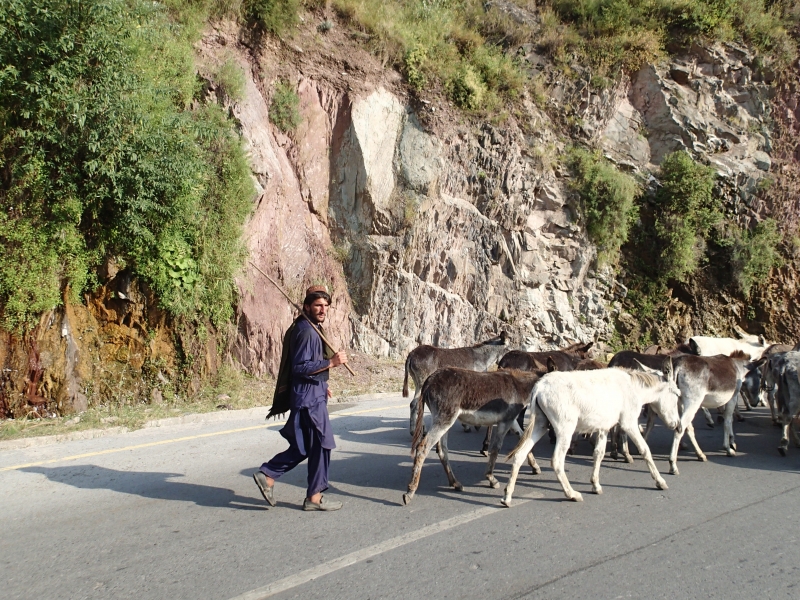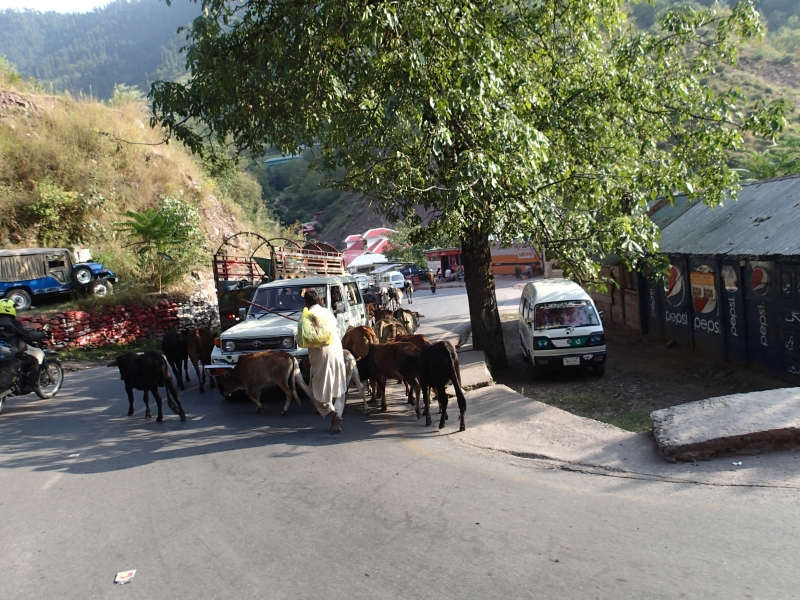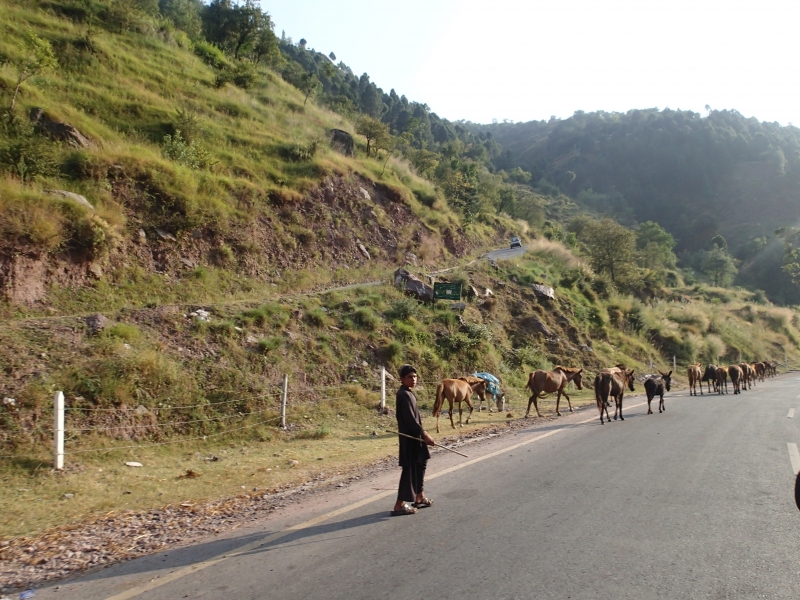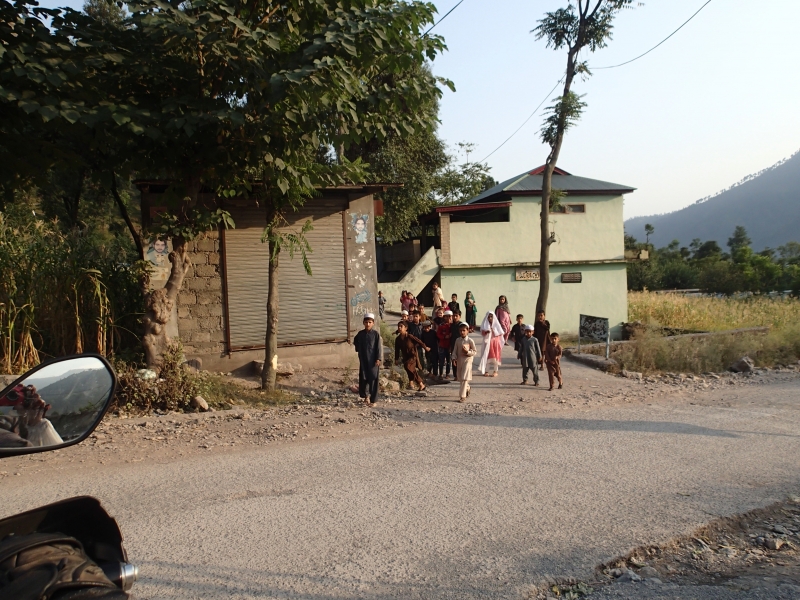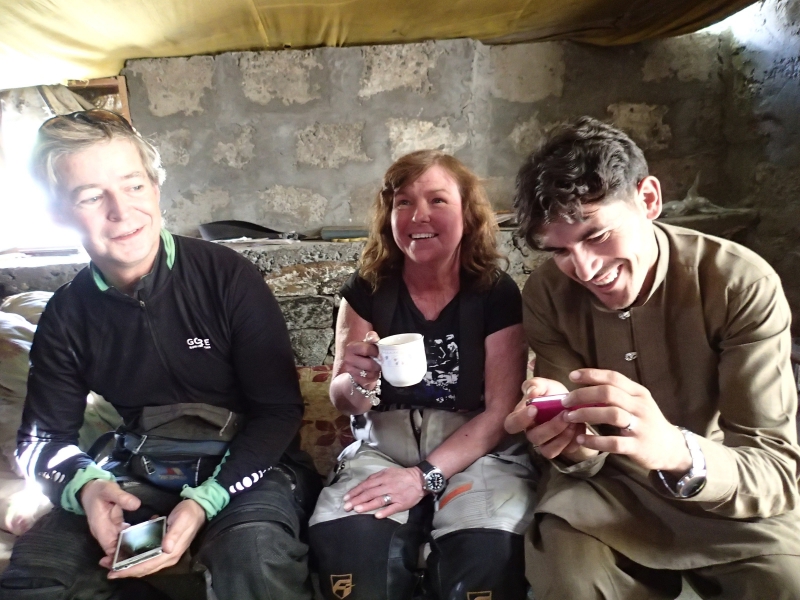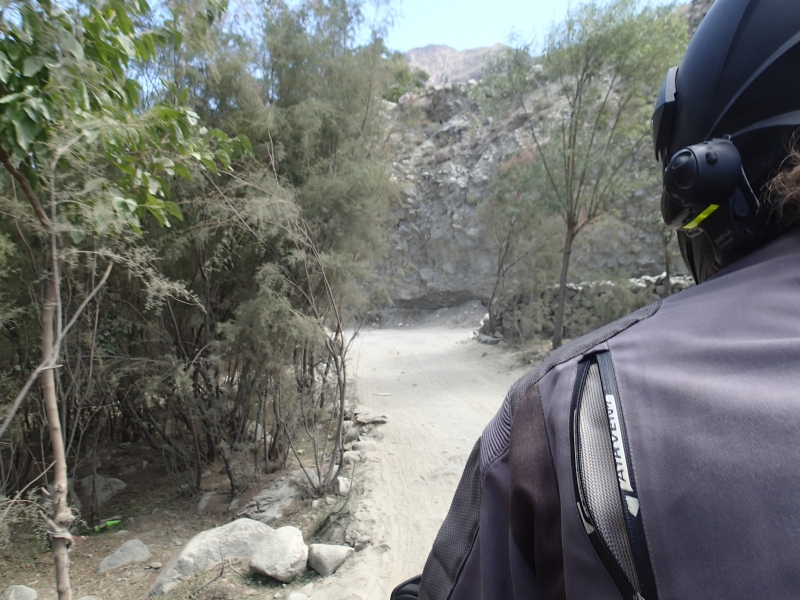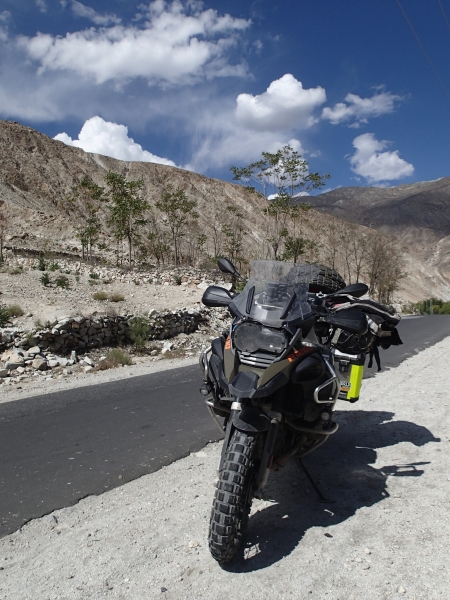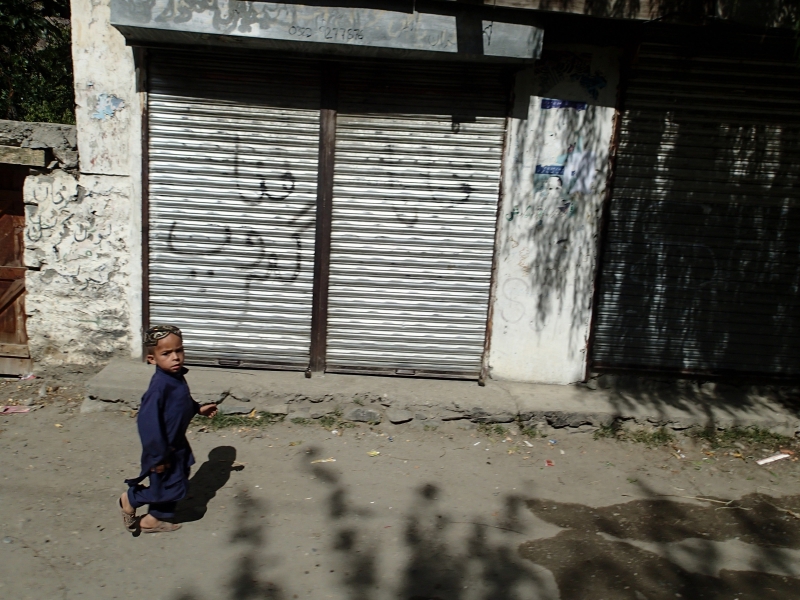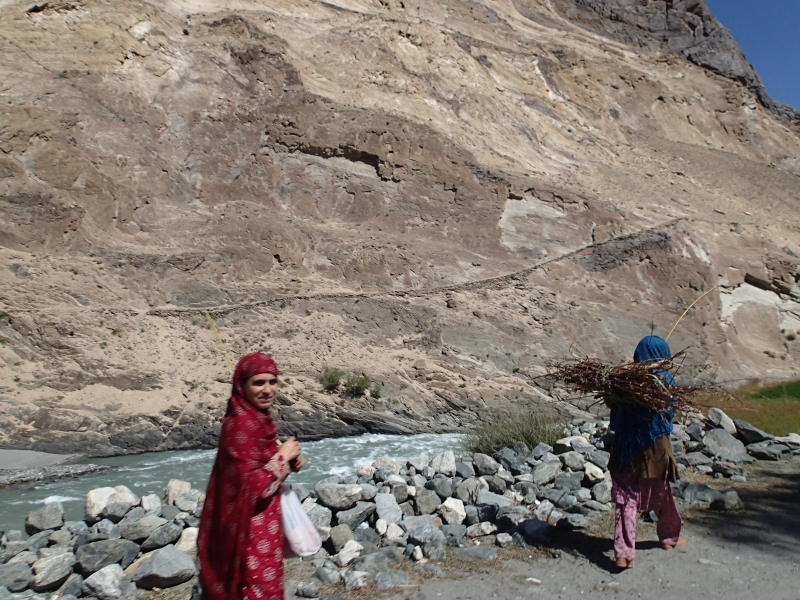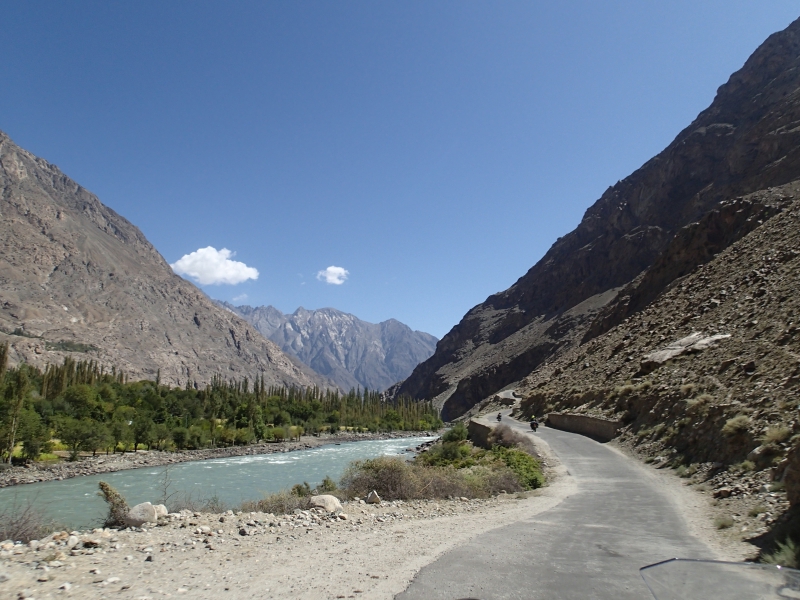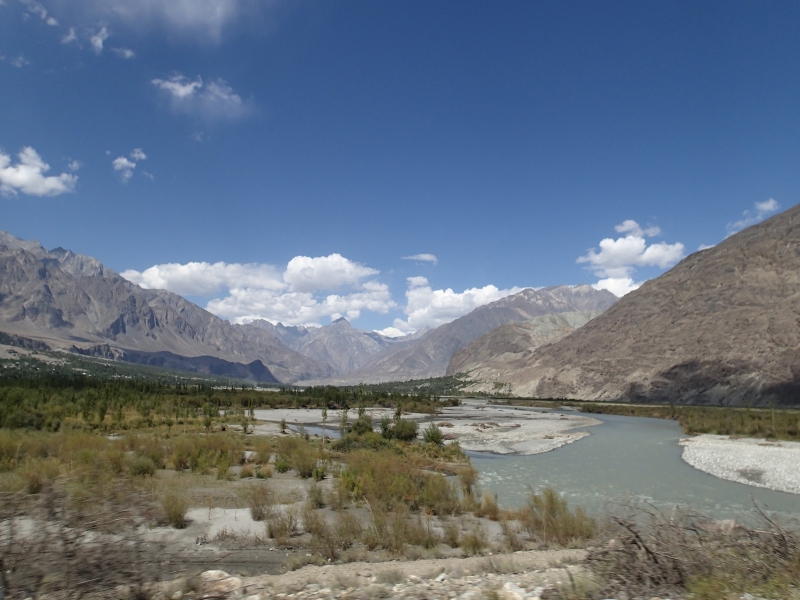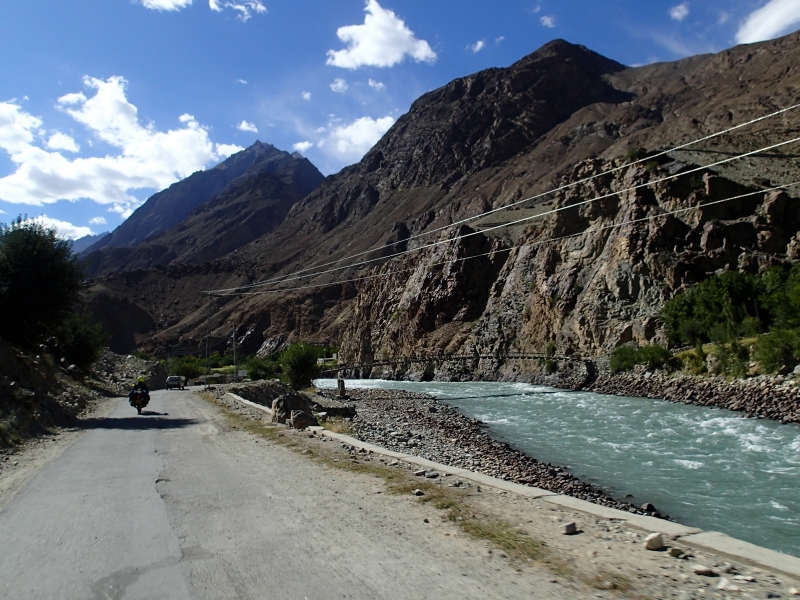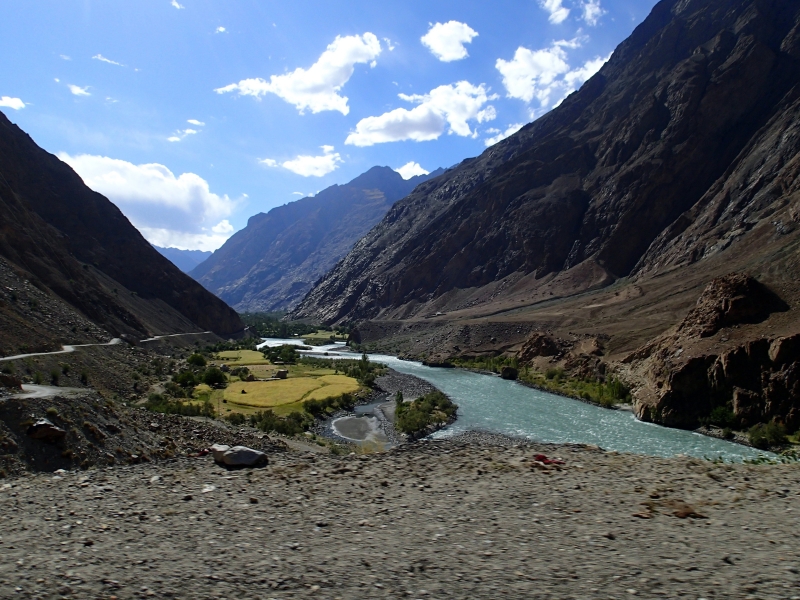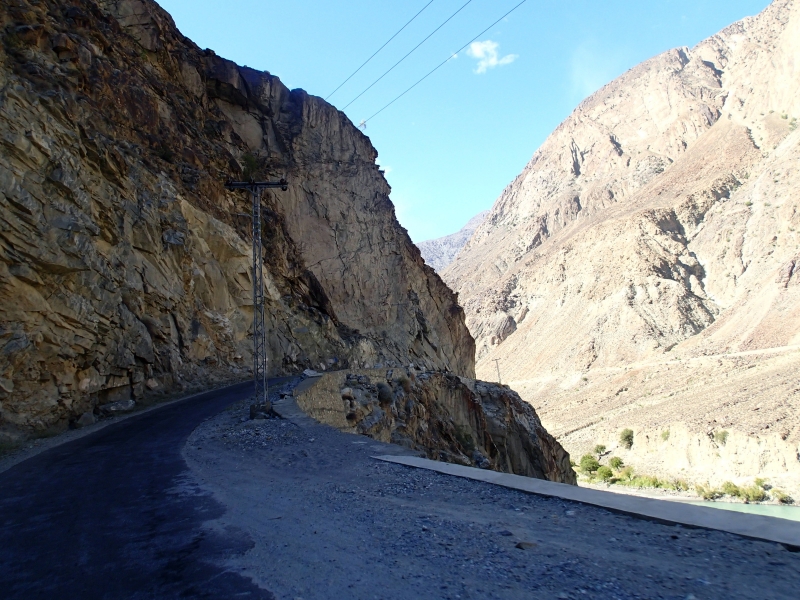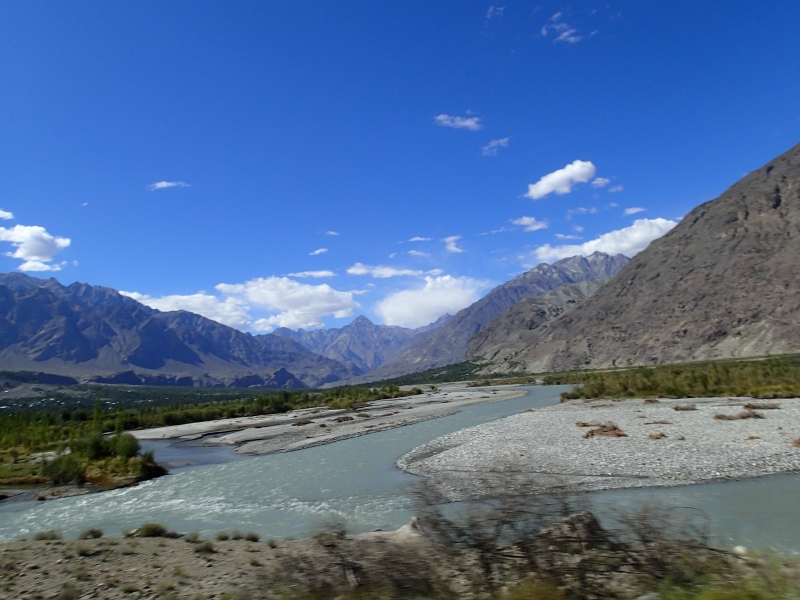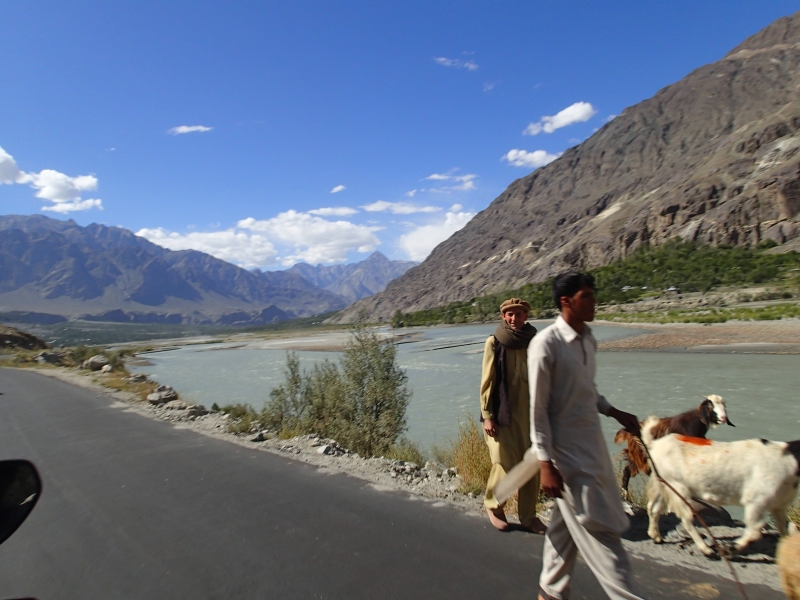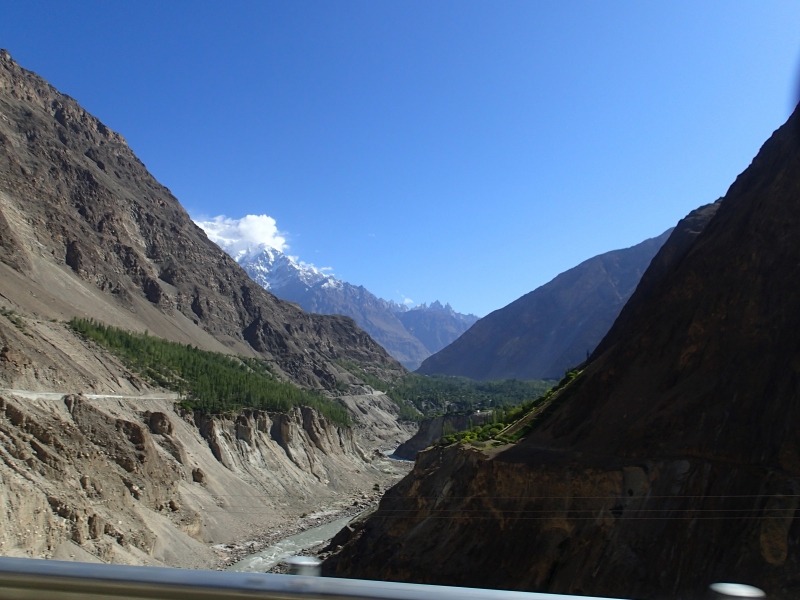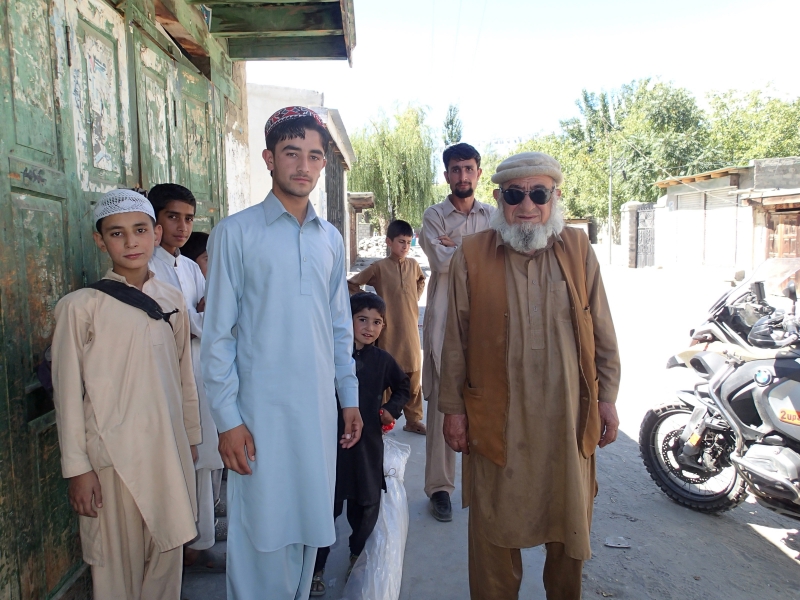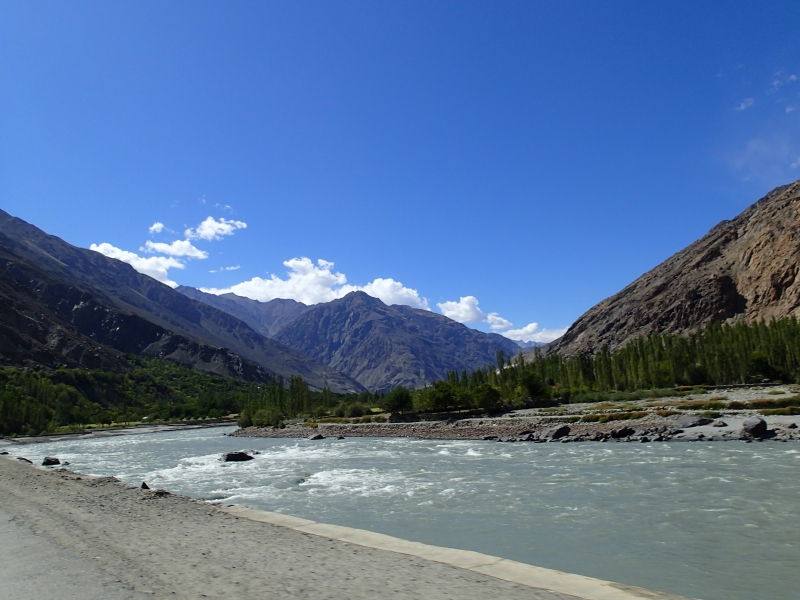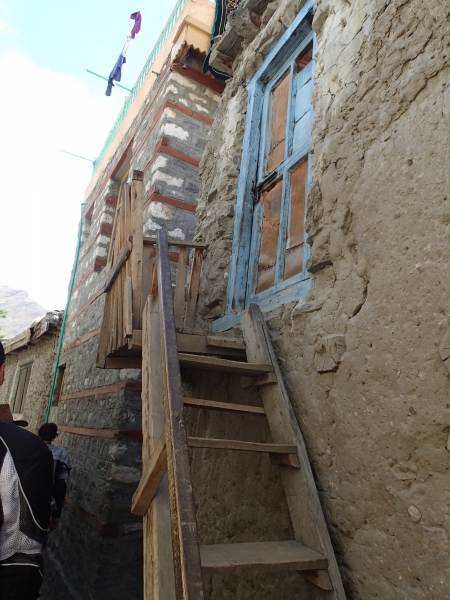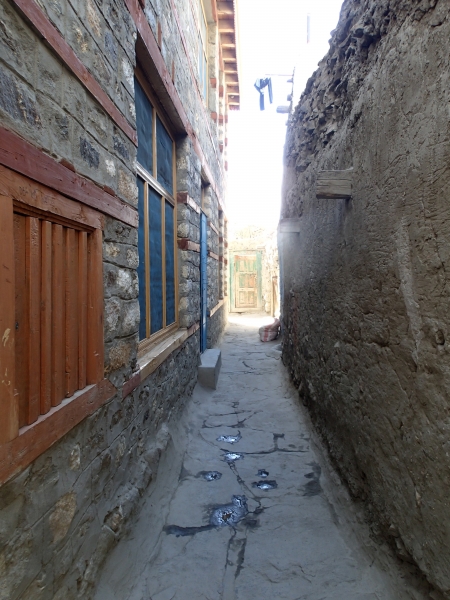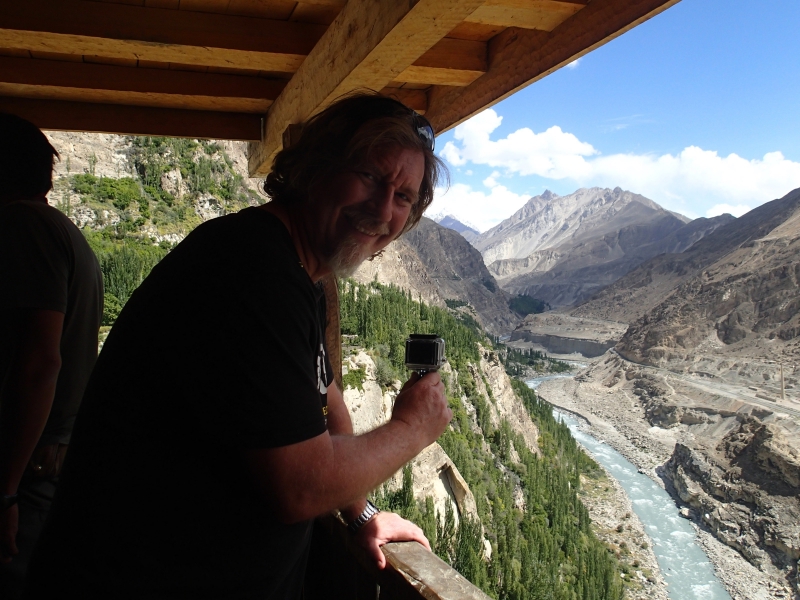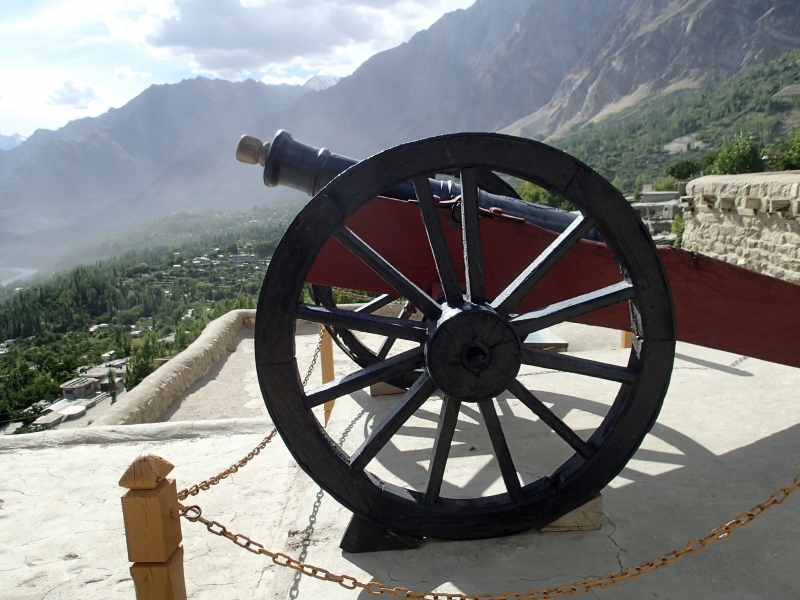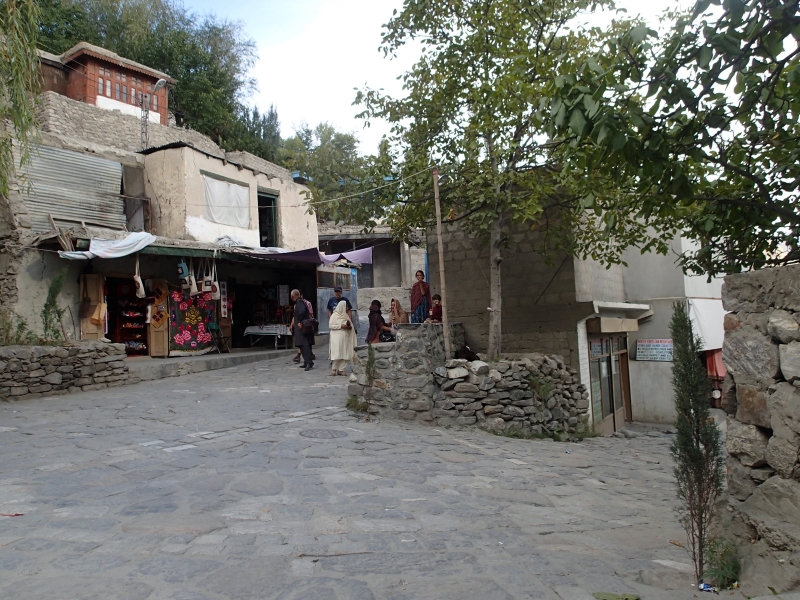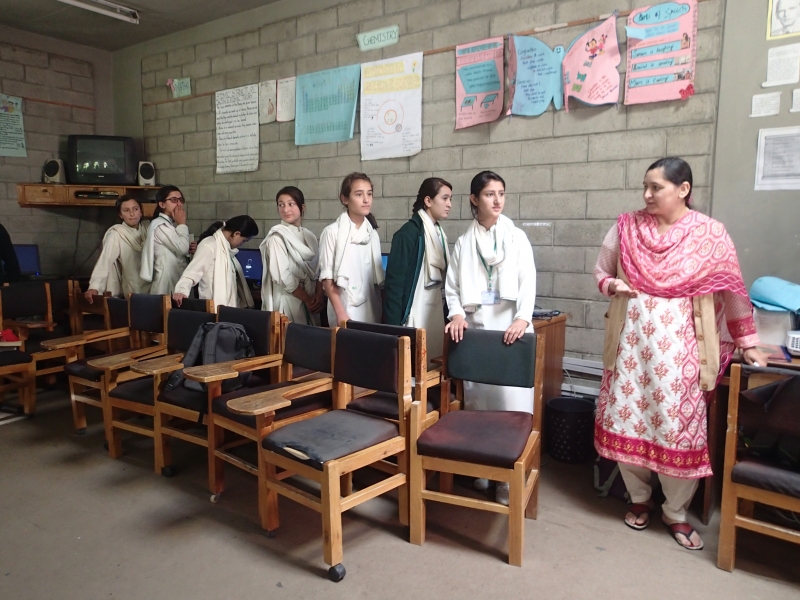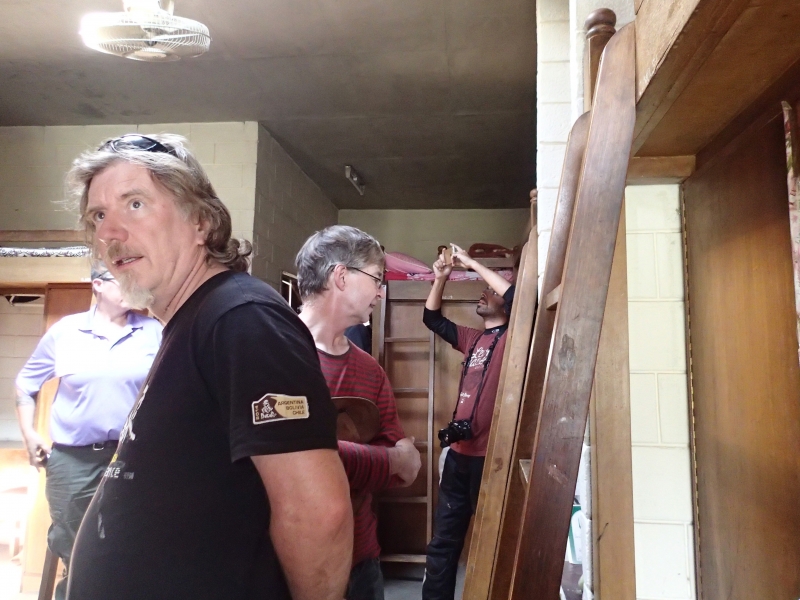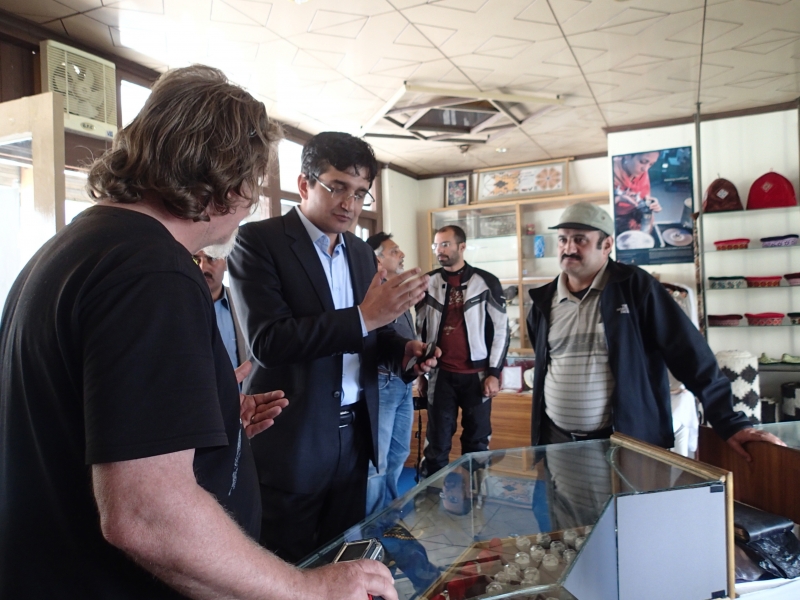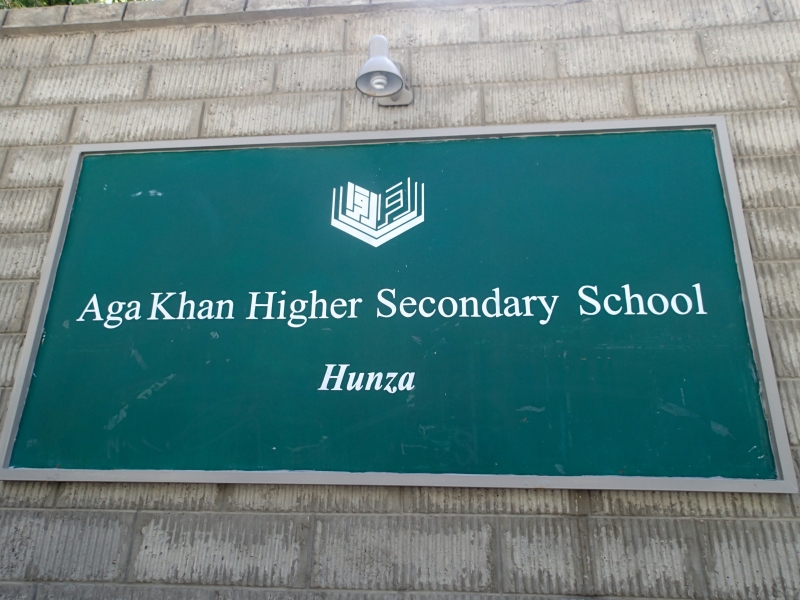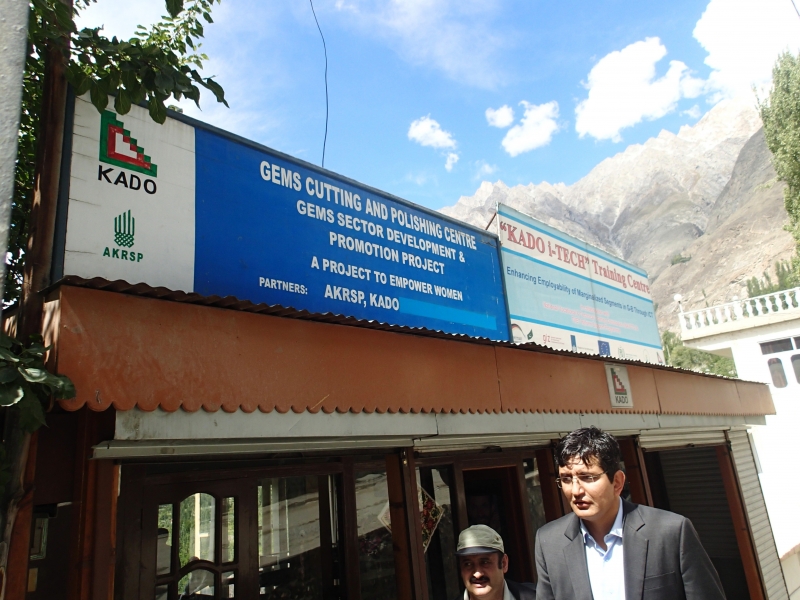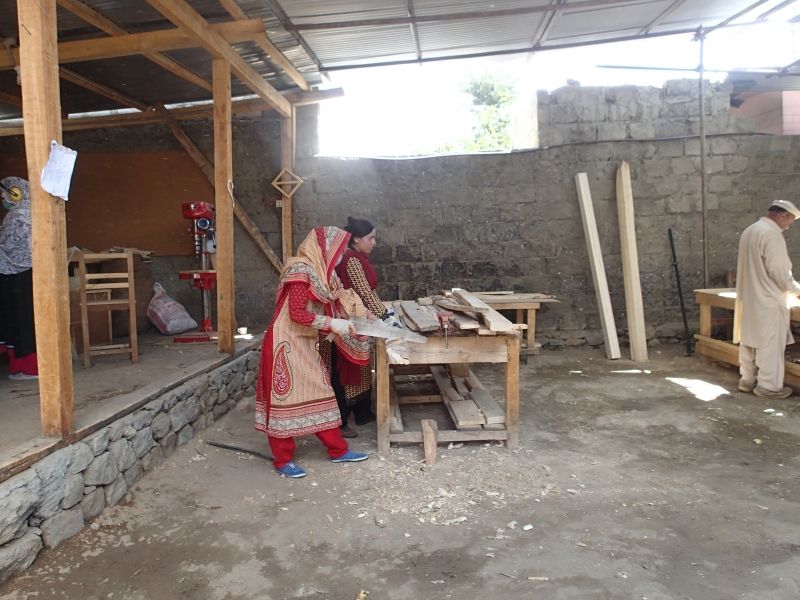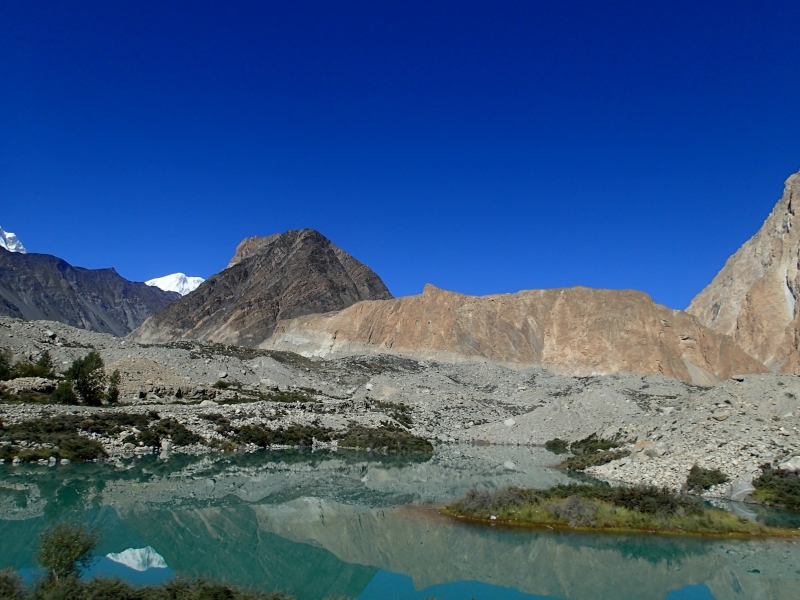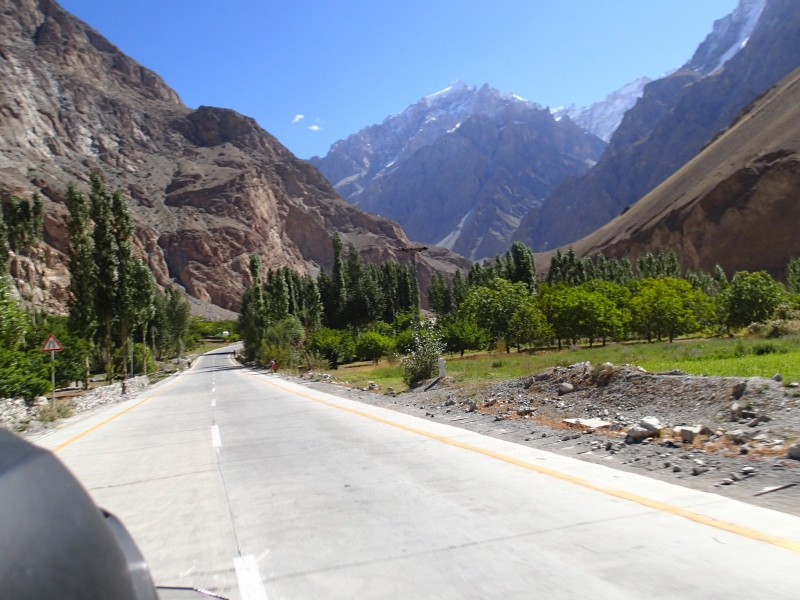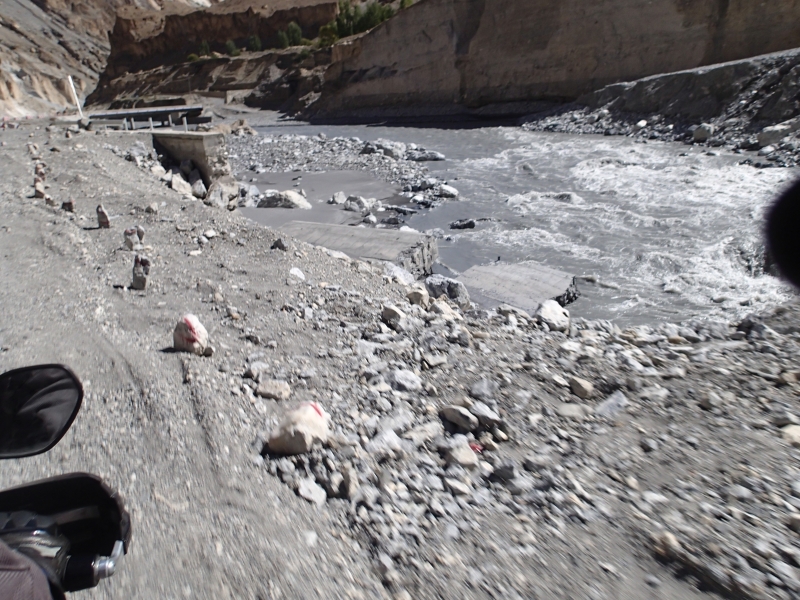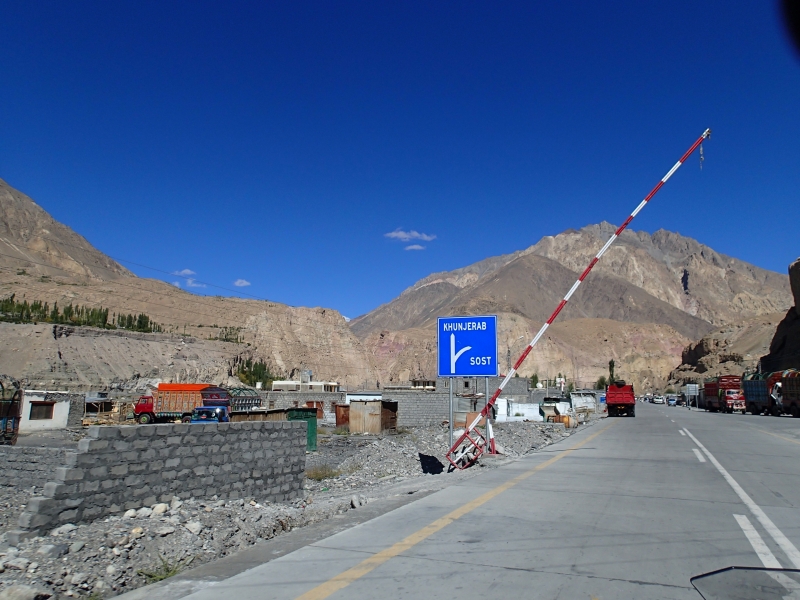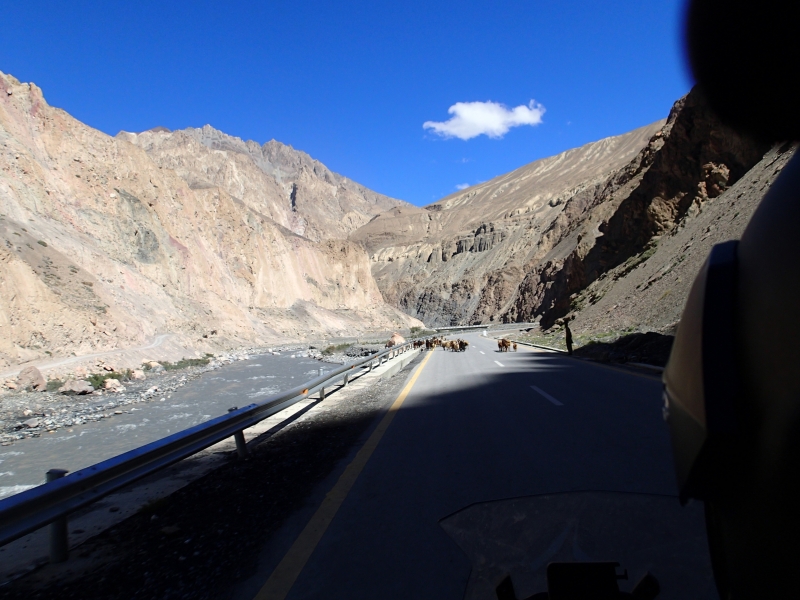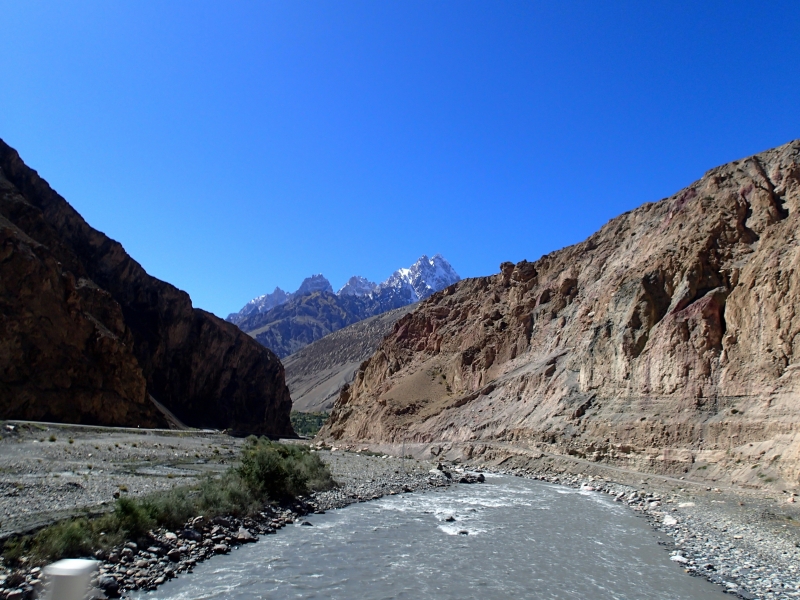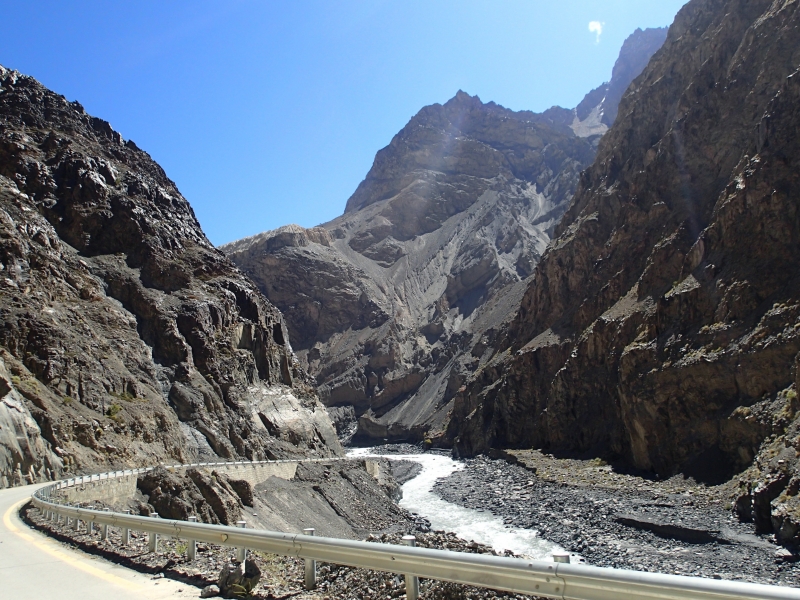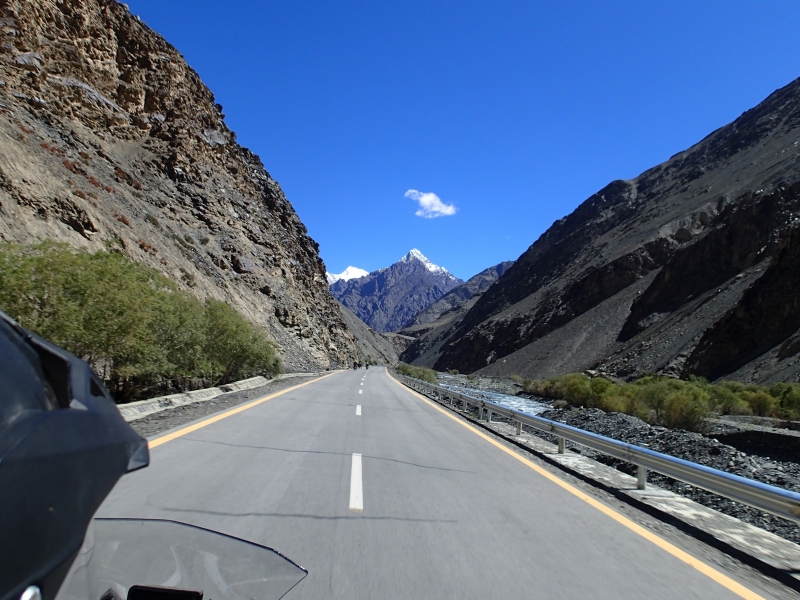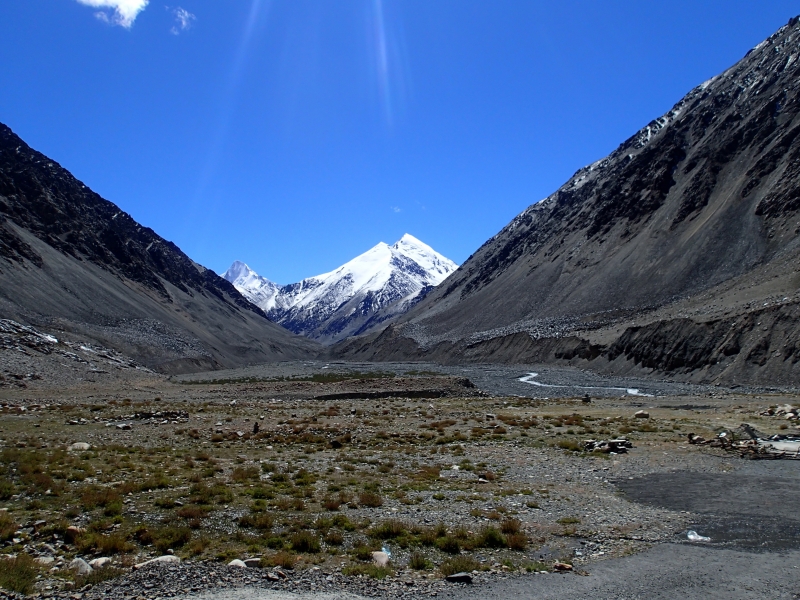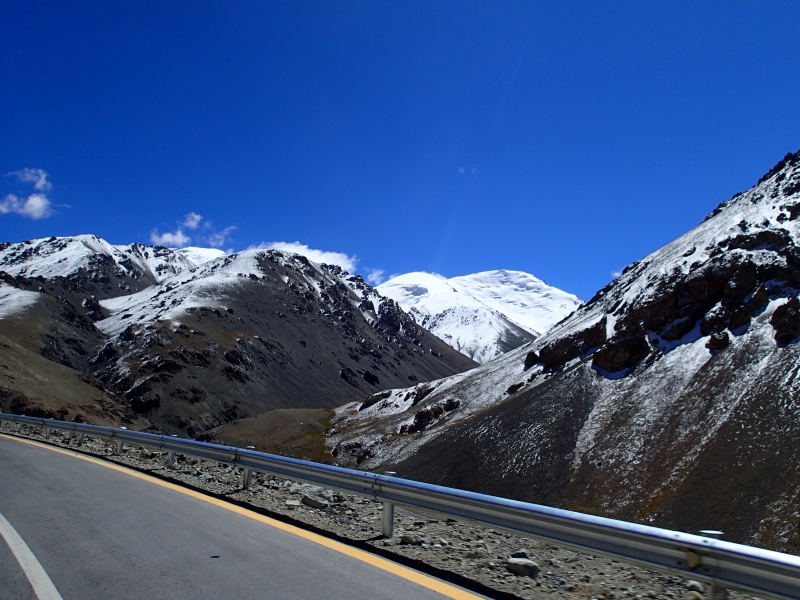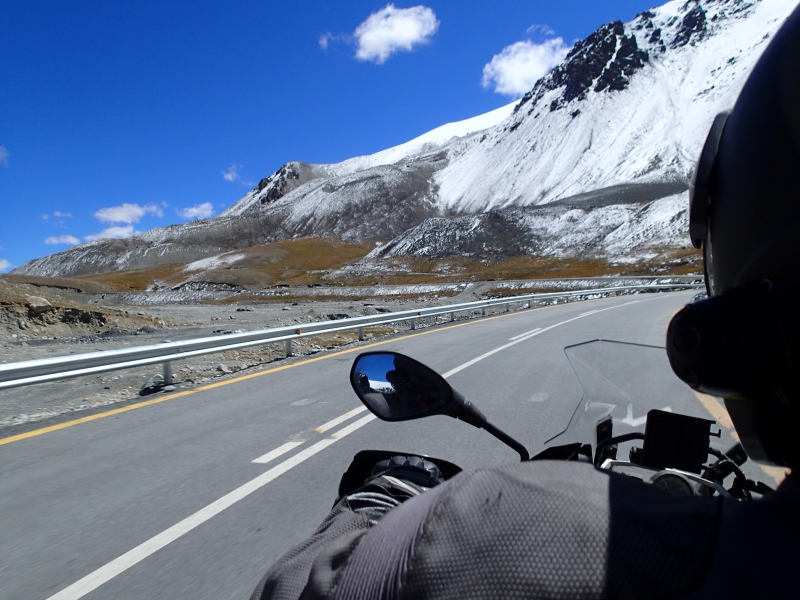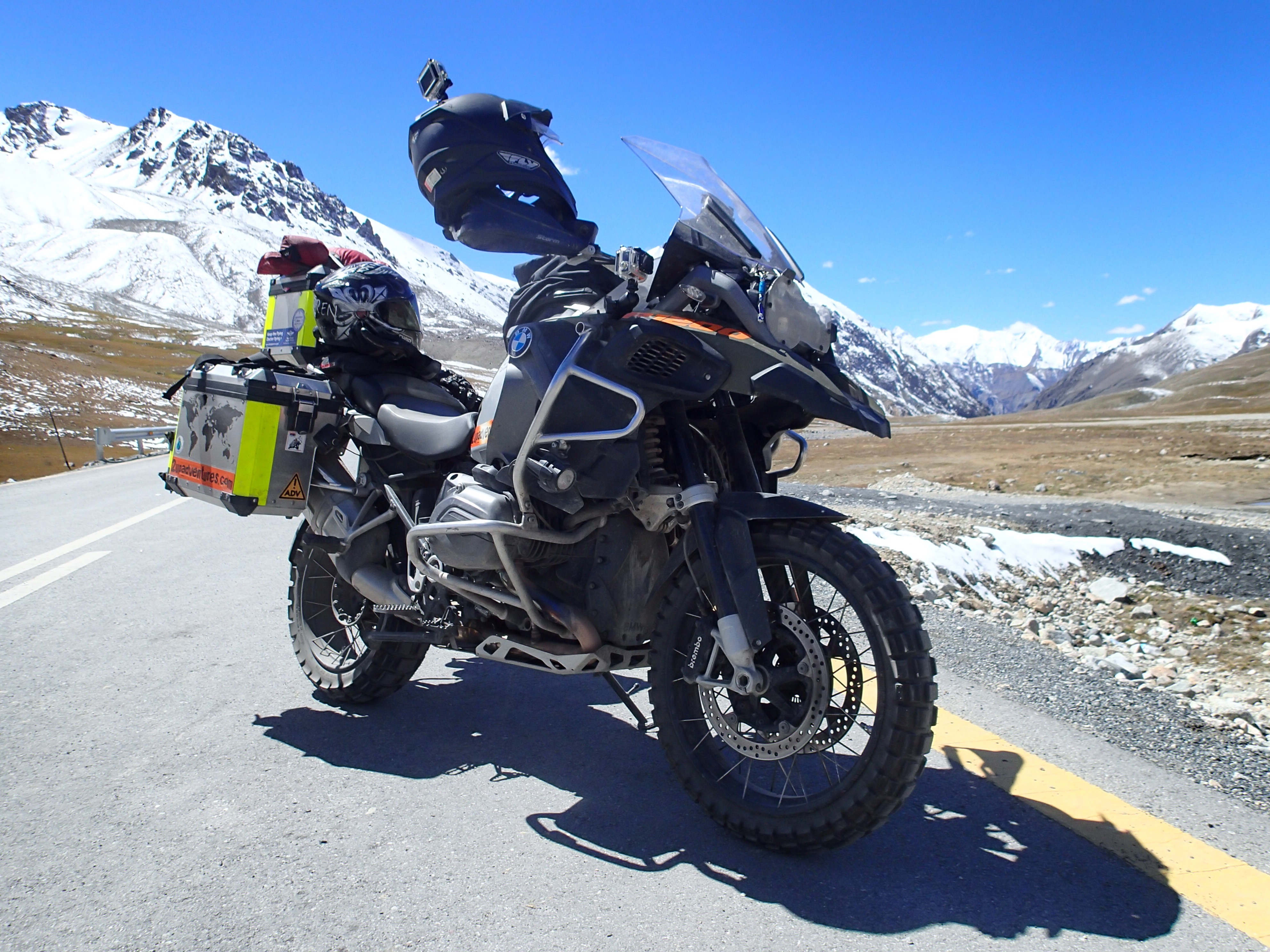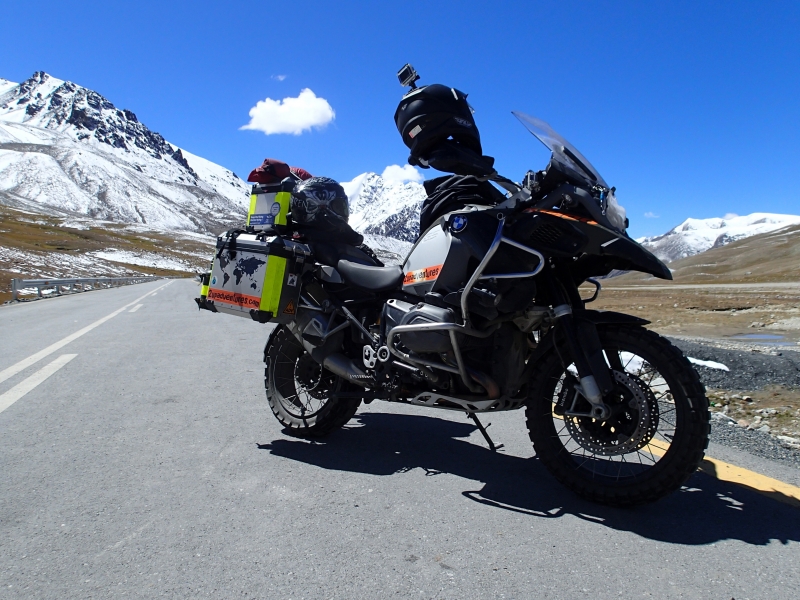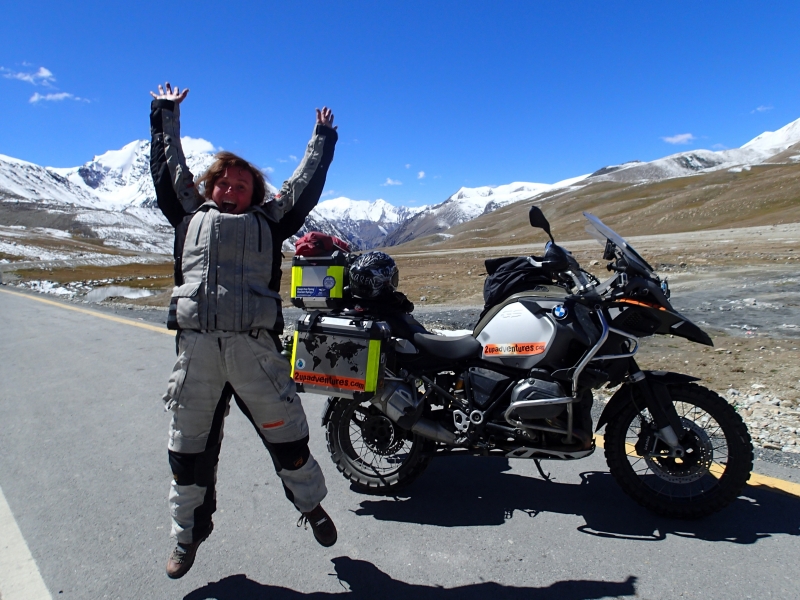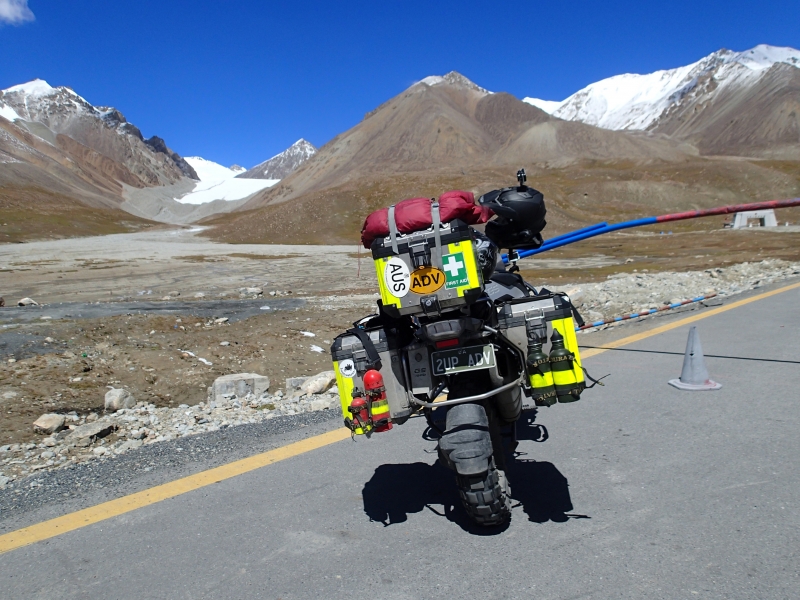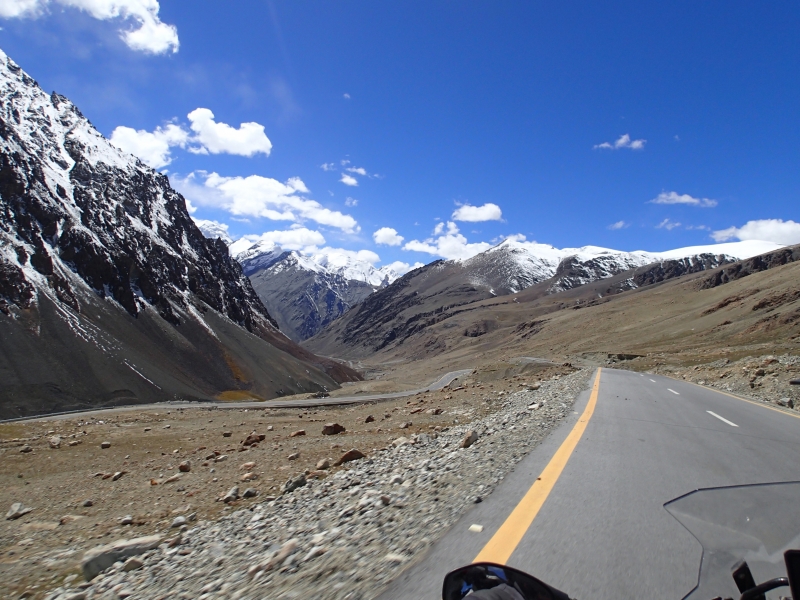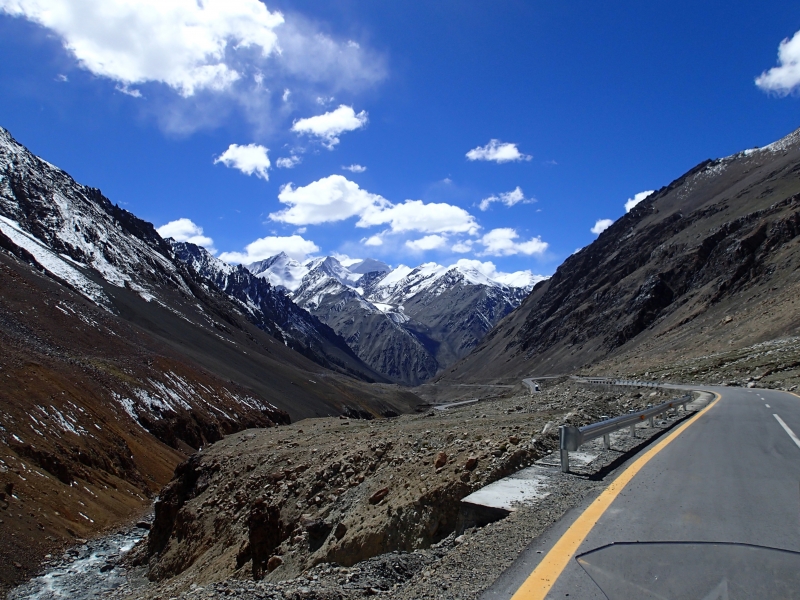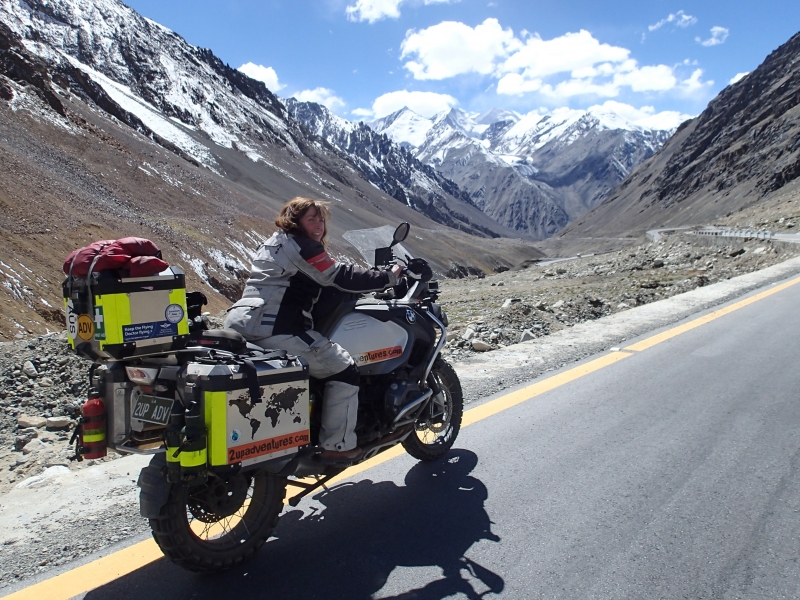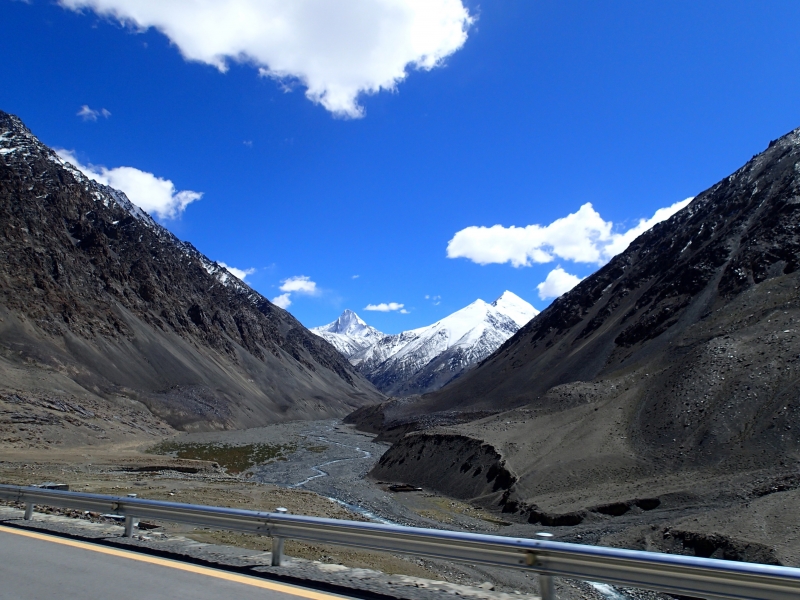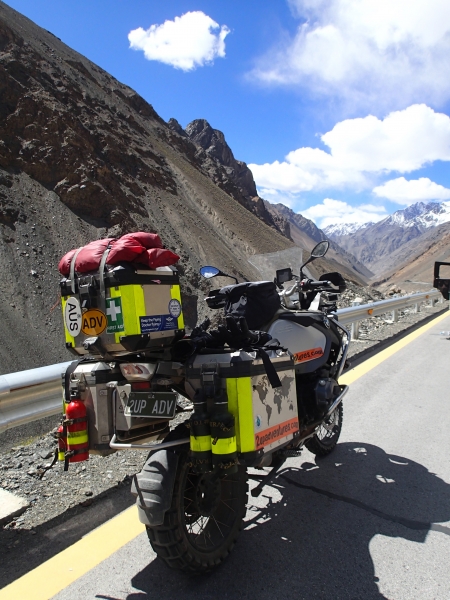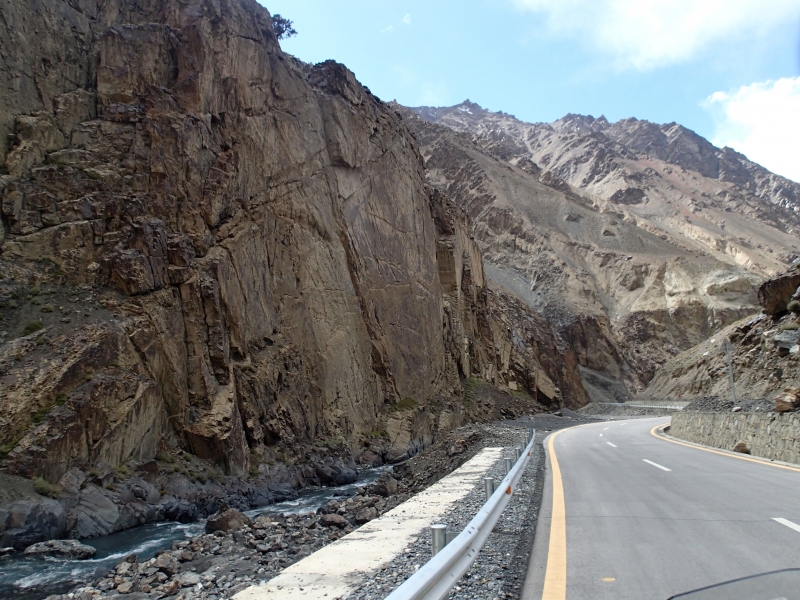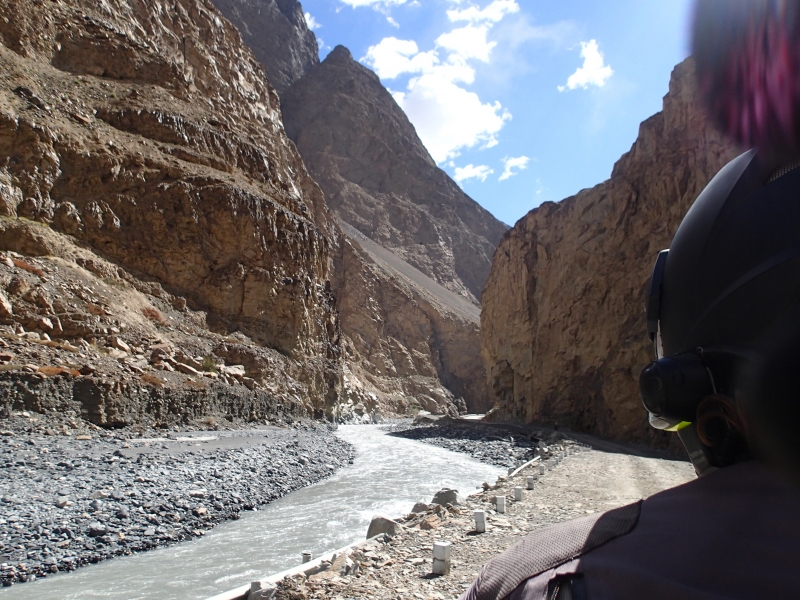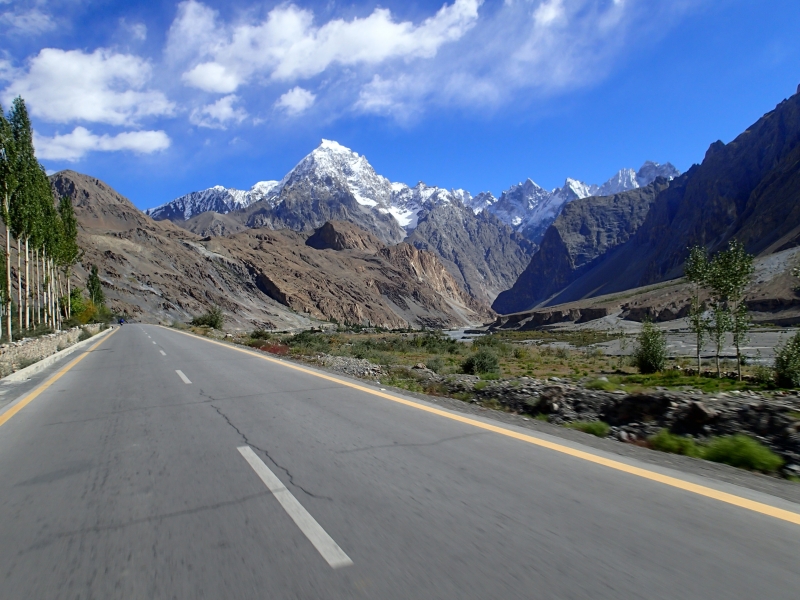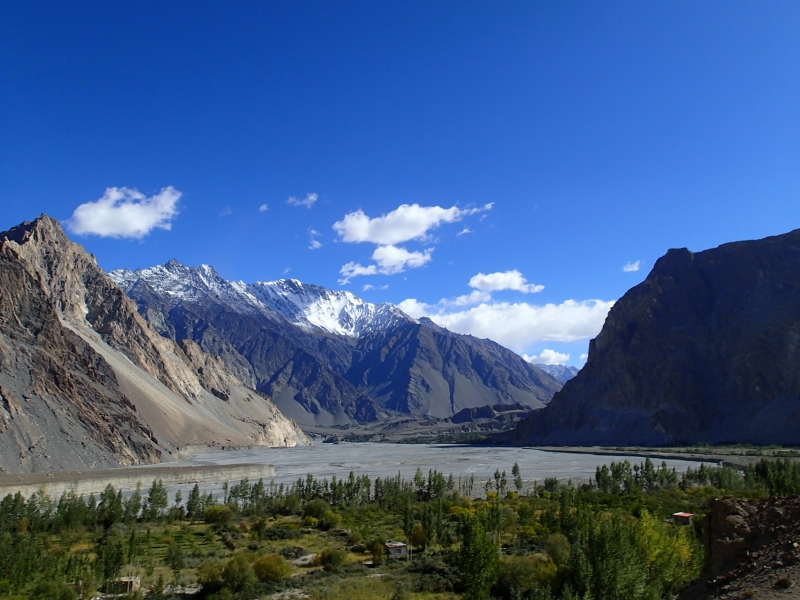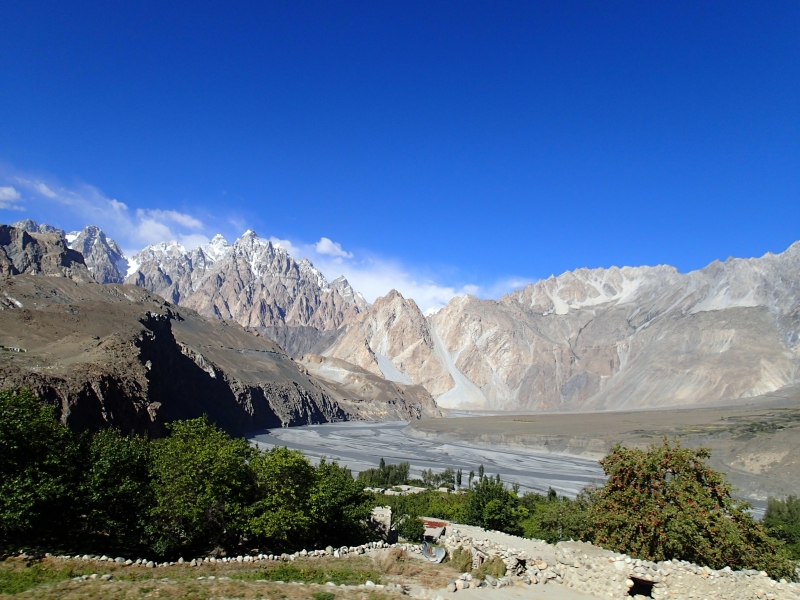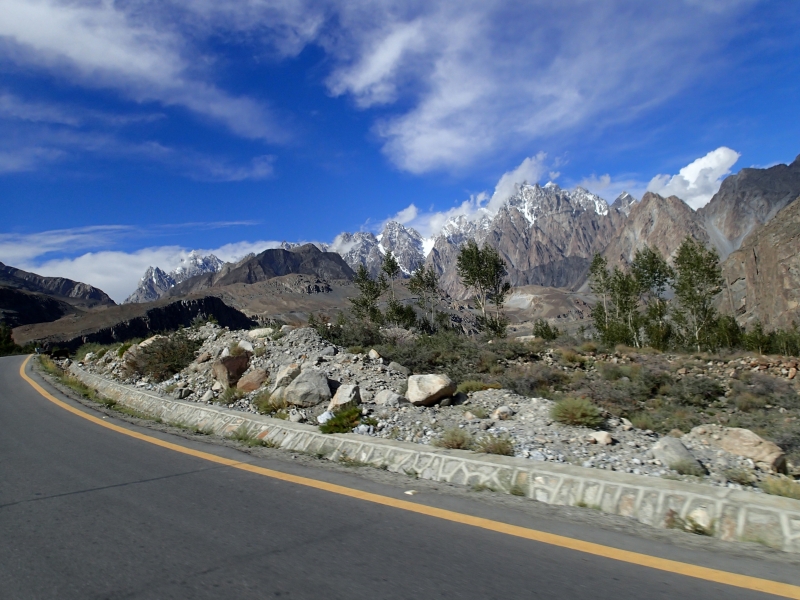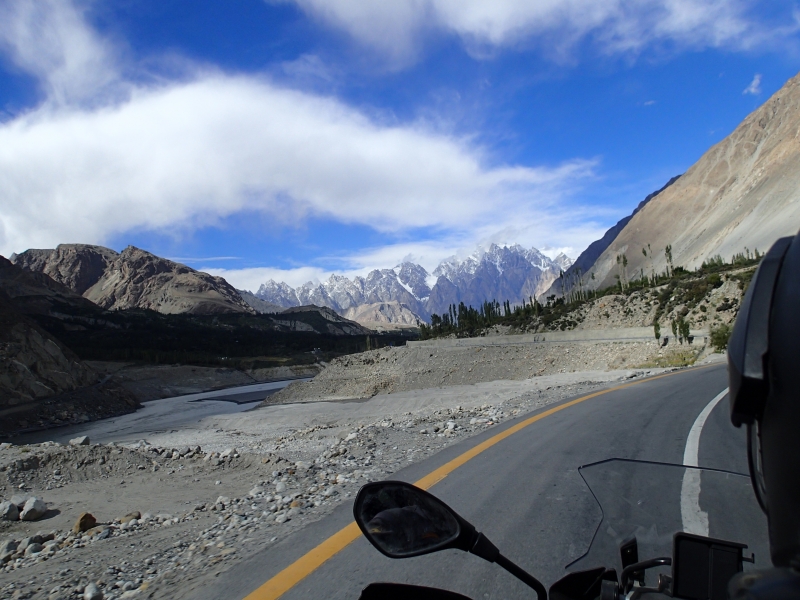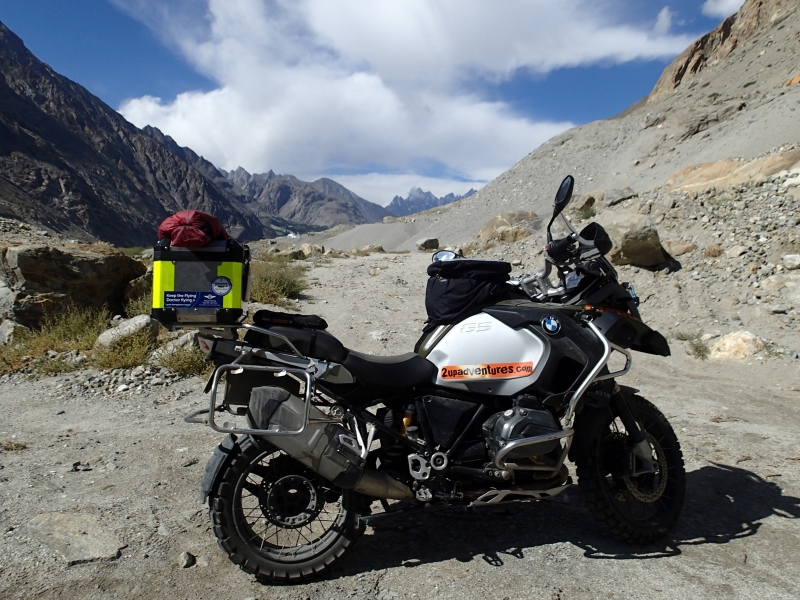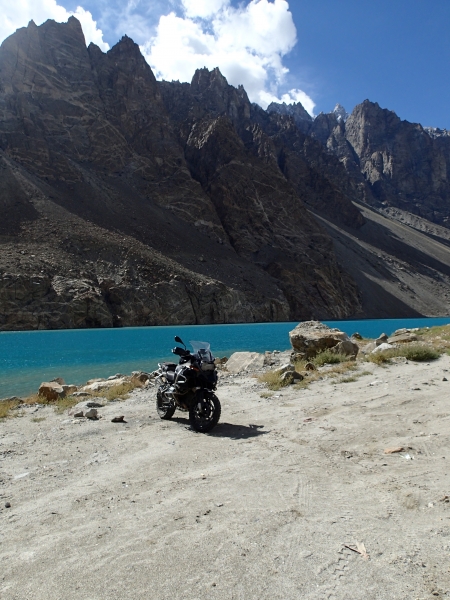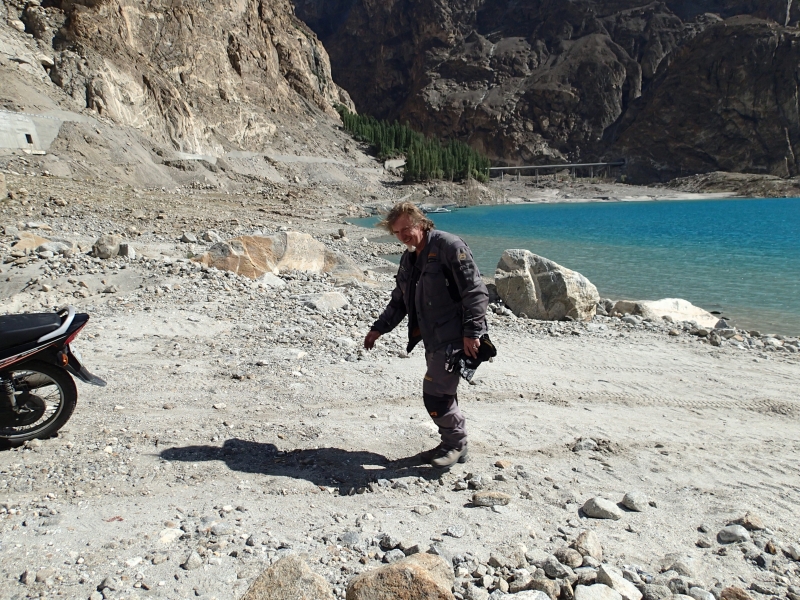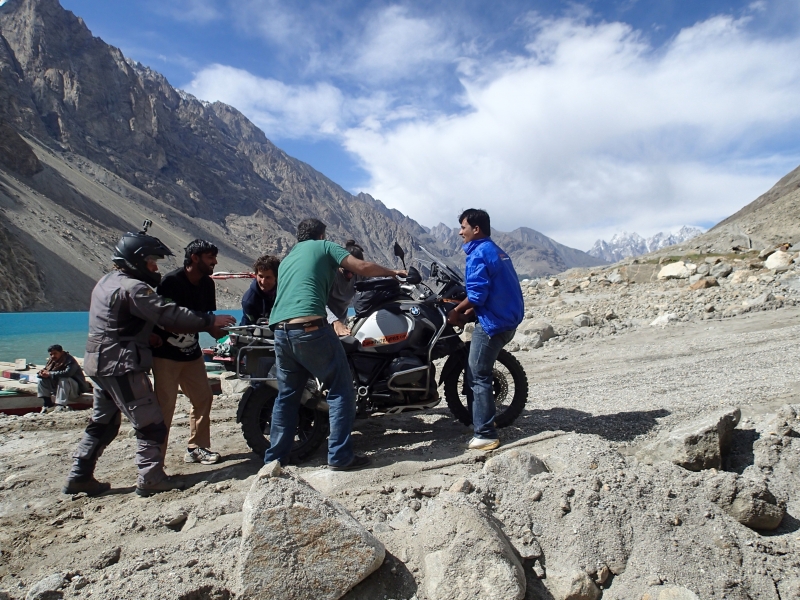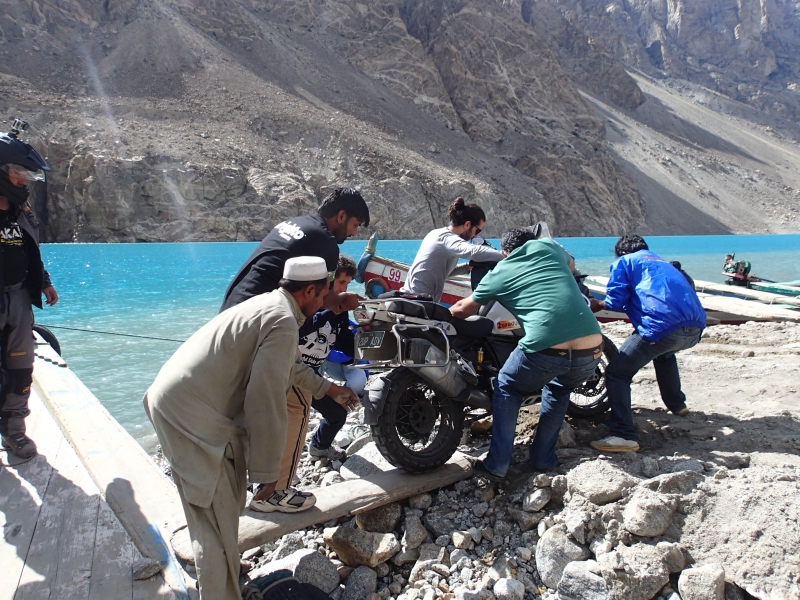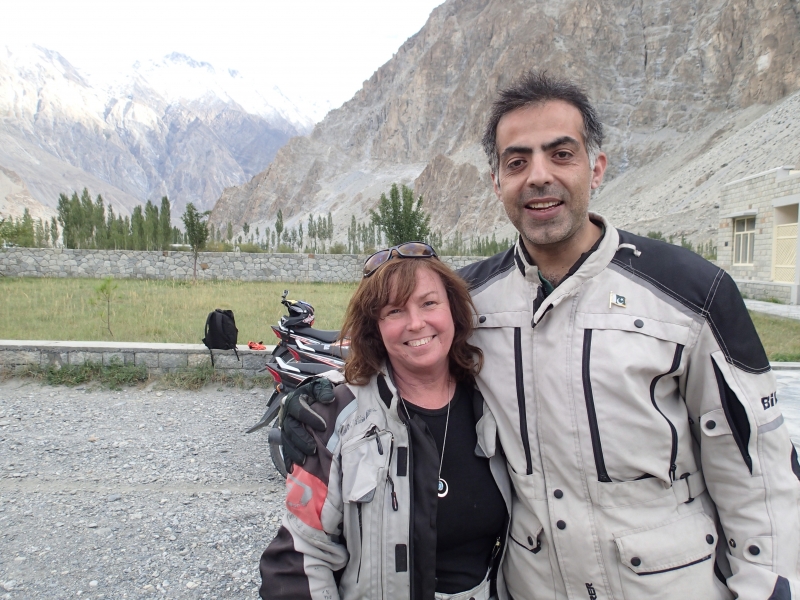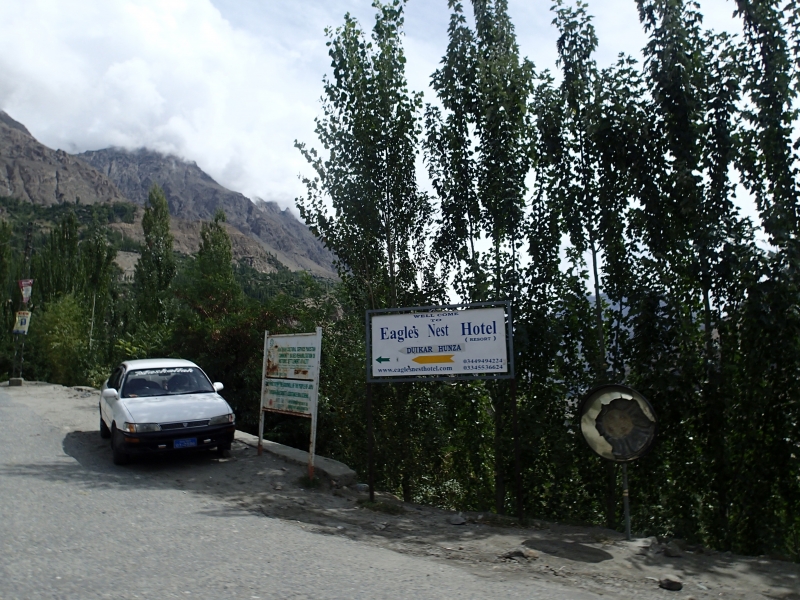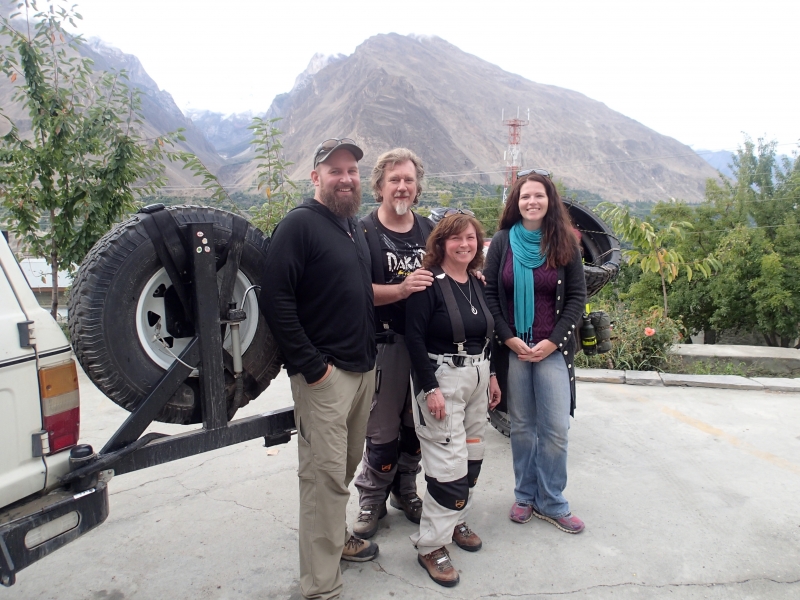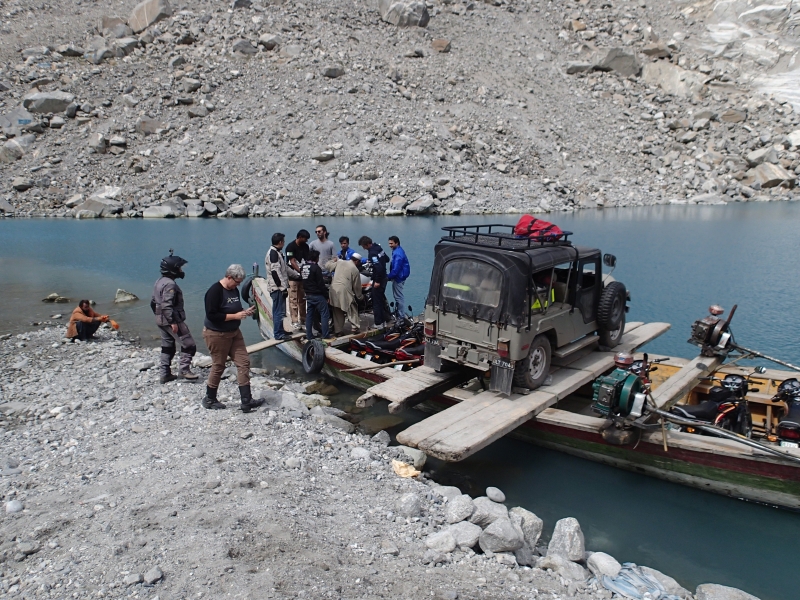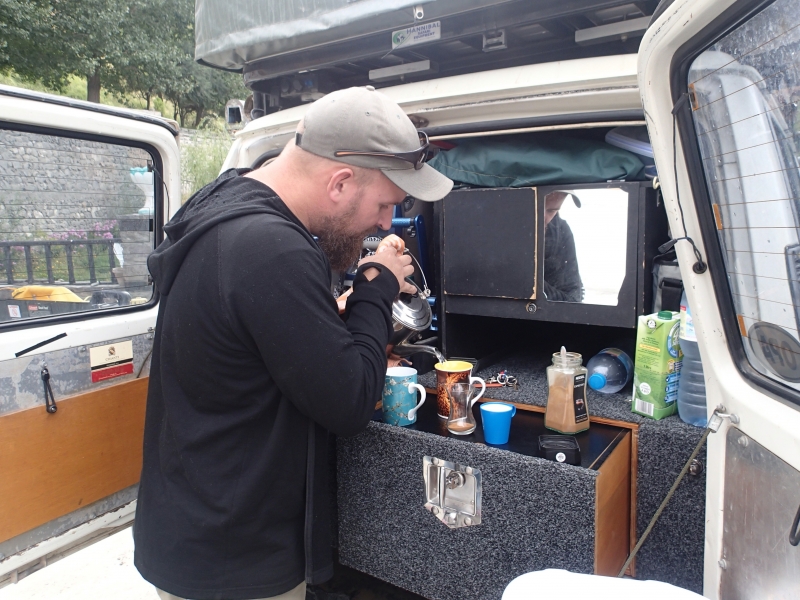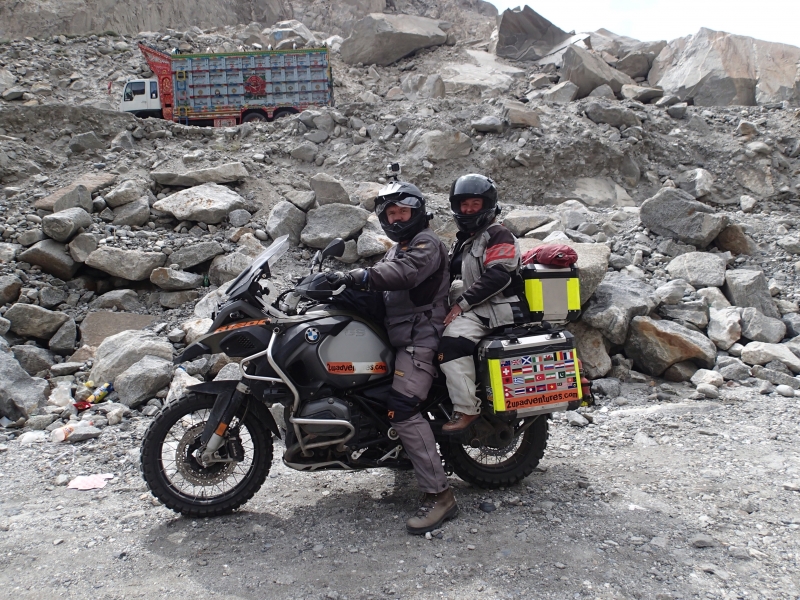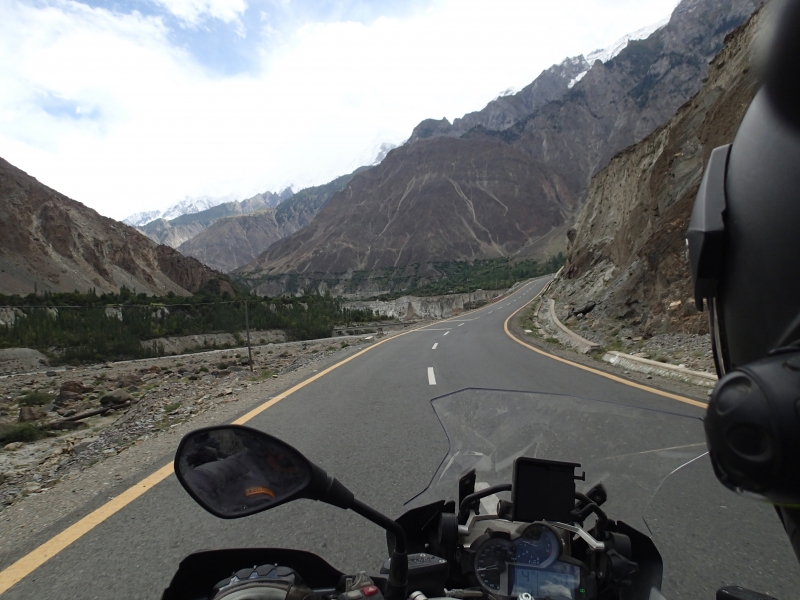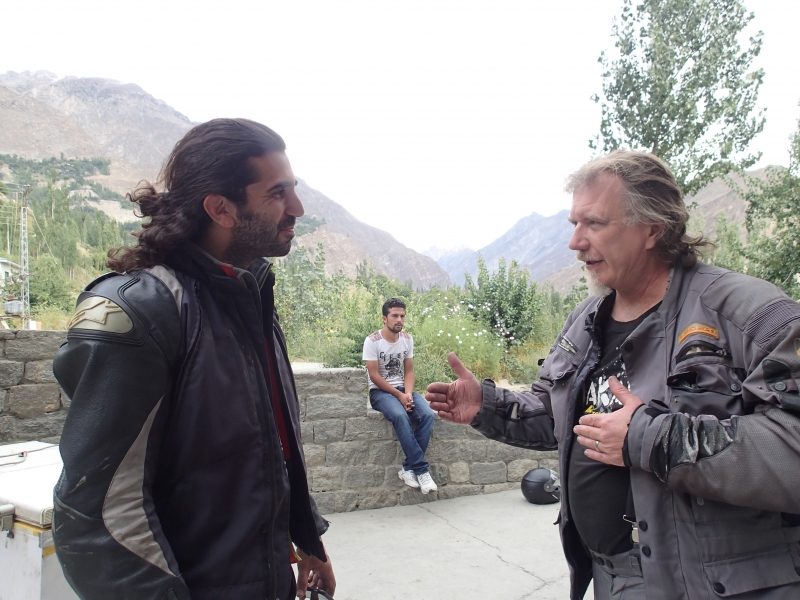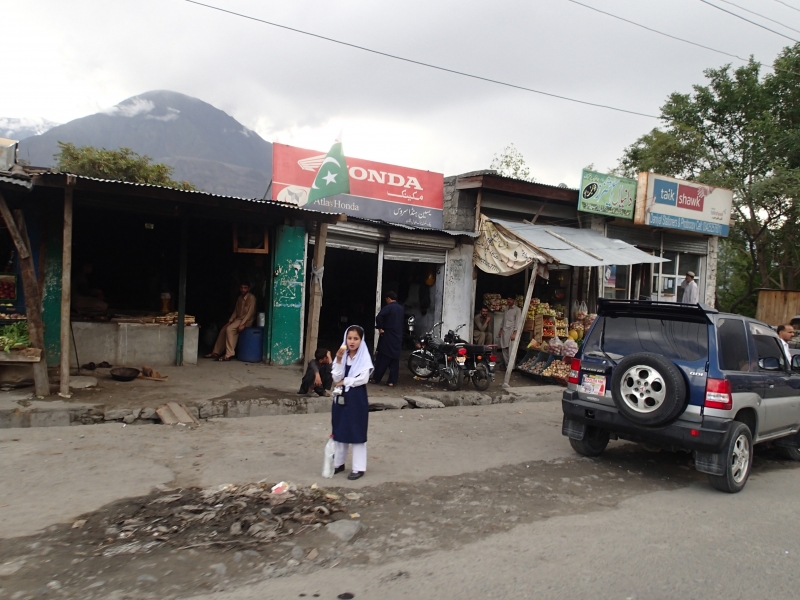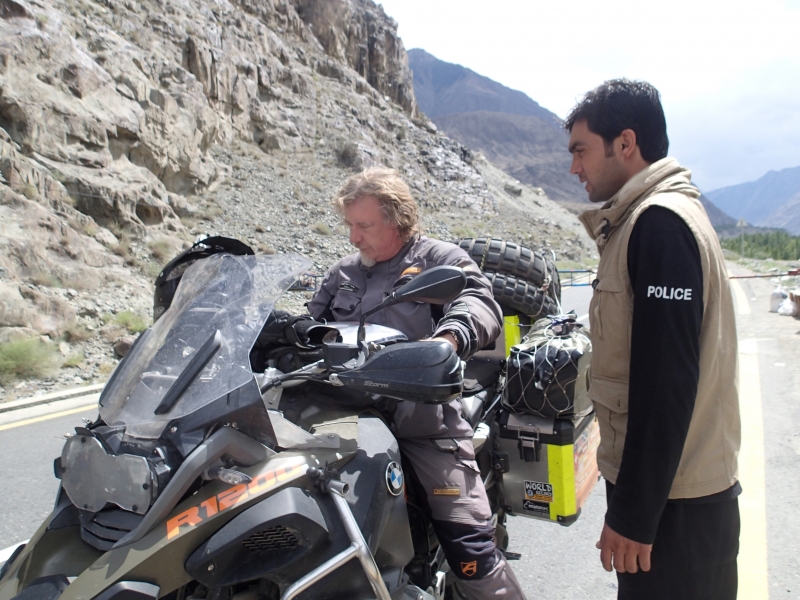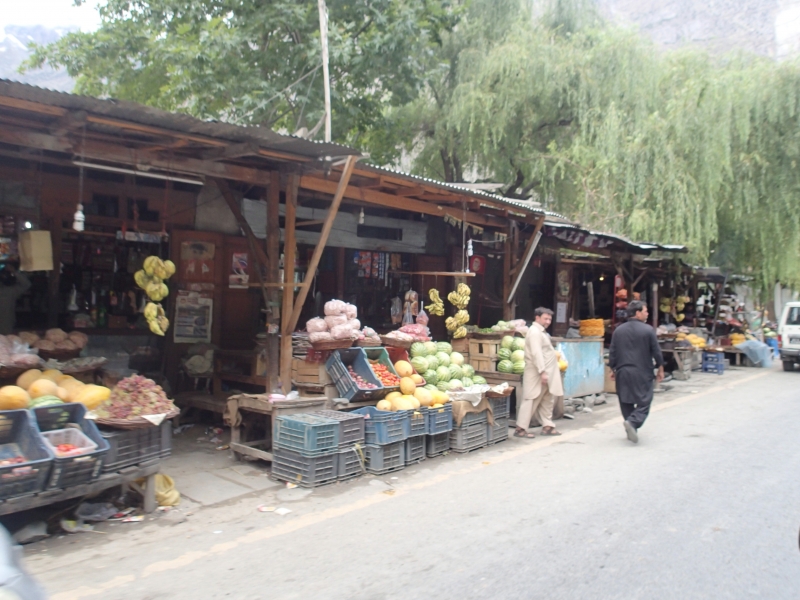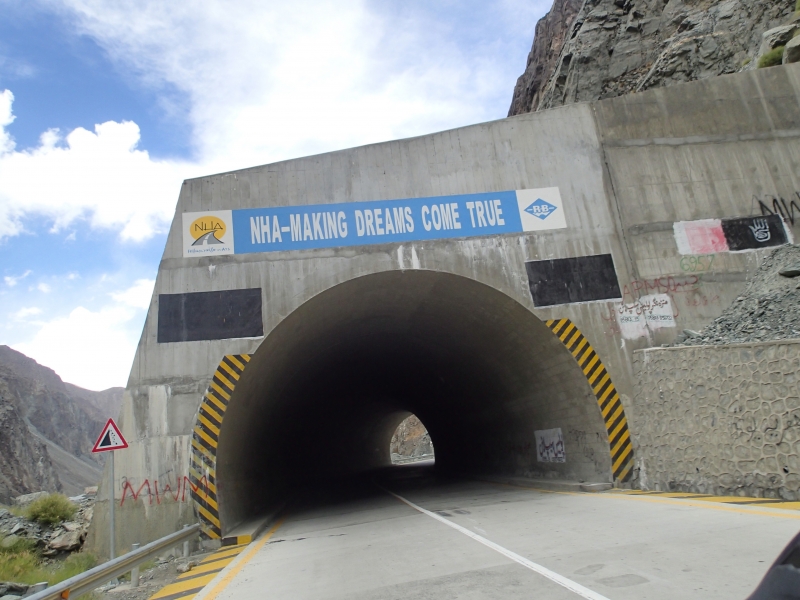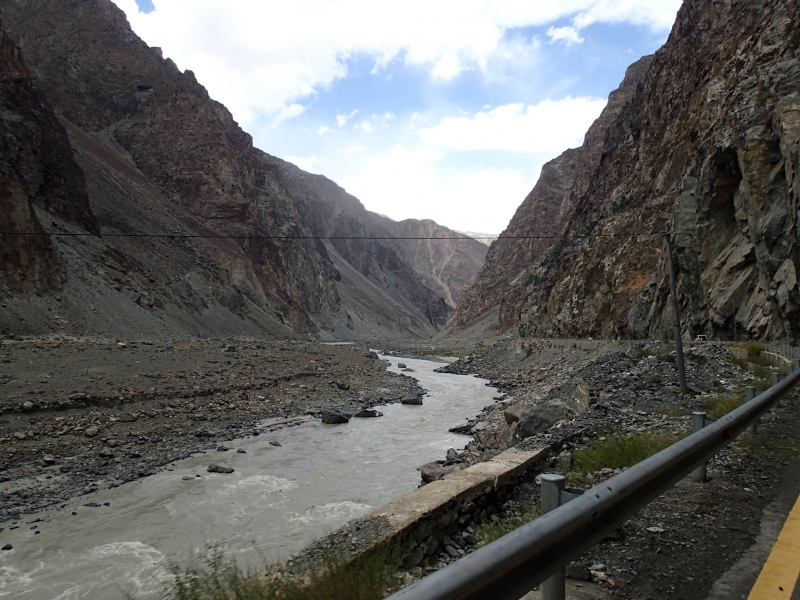100km approx.
We left Gujranwala about 10:30am after a round of selfies taken with assorted hotel staff – the guys at the Marian Hotel were very kind and interested in our travels, and we have enjoyed our stay here but our Pak visas are about to expire and hence it’s time to move on.
The ride down the N5 towards Lahore was surprisingly hassle-free (by Pakistan standards) and it wasn’t too long before we were crossing the river just north of Lahore. Or at least trying to cross the river – as about five lanes of traffic were trying to squeeze down to two lanes before entering the bridge. The traffic was moving really slow – so slow I was paddling the bike and fearful that a bus or rickshaw was going to run my feet over.
Karen snapped some great photos of the manic congestion and also the camels resting on the river bank, and then we were across the river and onto the almost-empty Lahore Ring Road. It wasn’t long before we were pulled over by the Ring Road Police and asked to show our permit as bikes aren’t allowed on the road – but the policeman was very accommodating and in the absence of any permit allowed us to continue, with instructions to say in the bus lane.
The ring road quickly skirted Lahore and dropped us onto the final approach to the Wagah border crossing, another section of rural road cum highway that culminated in three passport security checks all within a couple of hundred metres, before finally we arrived at the Pakistan immigration building.
A uniformed customs officer methodically copied our carnet details into his massive logbook, and then we completed our passport formalities before finally receiving our stamped carnet, all the while watching the torrential rain bucketing down outside as it had started pouring just after we walked into the building.
Karen’s jacket was soaked through as she’d left it on the bike, and so wet inside and out she climbed back onto the bike for the short ride to the India border checkpoints. We rode across the dividing line between Pakistan and India, stopping at the first checkpoint in the pouring rain. We had a form filled out for the bike entry and instructed to go to the Customs House around the corner and down the road a bit.
Karen got frisked – almost intimately – behind a screen whilst I had to unload all the crap from my pockets before we could enter the building, and then we waited for the slow immigration process to be completed. I filled out some more paperwork – labelled ‘Form X’ – for the bike carnet, and we then settled down on the metal seats in the customs waiting area for what seemed like an eternity.
Eventually we were called up and taken out to the bike, and asked to move it to an inspection location where six or so men poured over the chassis number and engine number. They wanted us to unpack all of our gear onto the wet tarmac, but Karen refused so we unloaded our panniers and bags and trundled them into the customs hall so they could be opened up and inspected.
Inspections completed I reloaded the bike, and we waited again for our carnet to be returned to us. The only redeeming aspect of the afternoon was ‘Dozer’ – the three-year old Golden Labrador narcotics dog that was more interested in chasing plastic bottles across the floor and posing for photos with travellers than sniffing around for drugs.
I had a bit of a debate with a customs officer over the spare tyres we were carrying as they weren’t list on the carnet manifest, and I wasn’t sure if they would try and hit us up for import duties, but eventually common-sense prevailed and they stamped our carnet, allowing us to leave.
A bit more paper-shuffling, one more passport check and then we were free and on the road towards Amritsar – 30km away.
We’d booked into Mrs Bhandari’s Guest House – an icon amongst travellers, and when we rolled in about 5:30pm we saw Emiel & Claire’s Landcruiser as expected – and to our surprise we also saw Martin’s motorbike parked up as well. Claire and Emiel had met Martin yesterday at the Pakistan Immigration Building when they crossed the border yesterday.
The five of us enjoyed a pleasant dinner and a few refreshing Kingfisher’s – my first real beer in about three months, and a rewarding treat at the end of a long day. Today marks six months exactly since Karen and I left Perth on that wet March morning to fly out to the UK and start our ride back to Perth. Arriving in India today – especially after the hassles we have had along the way in arranging our Indian visas – is especially poignant as we’re pretty much half-way back to Perth.


